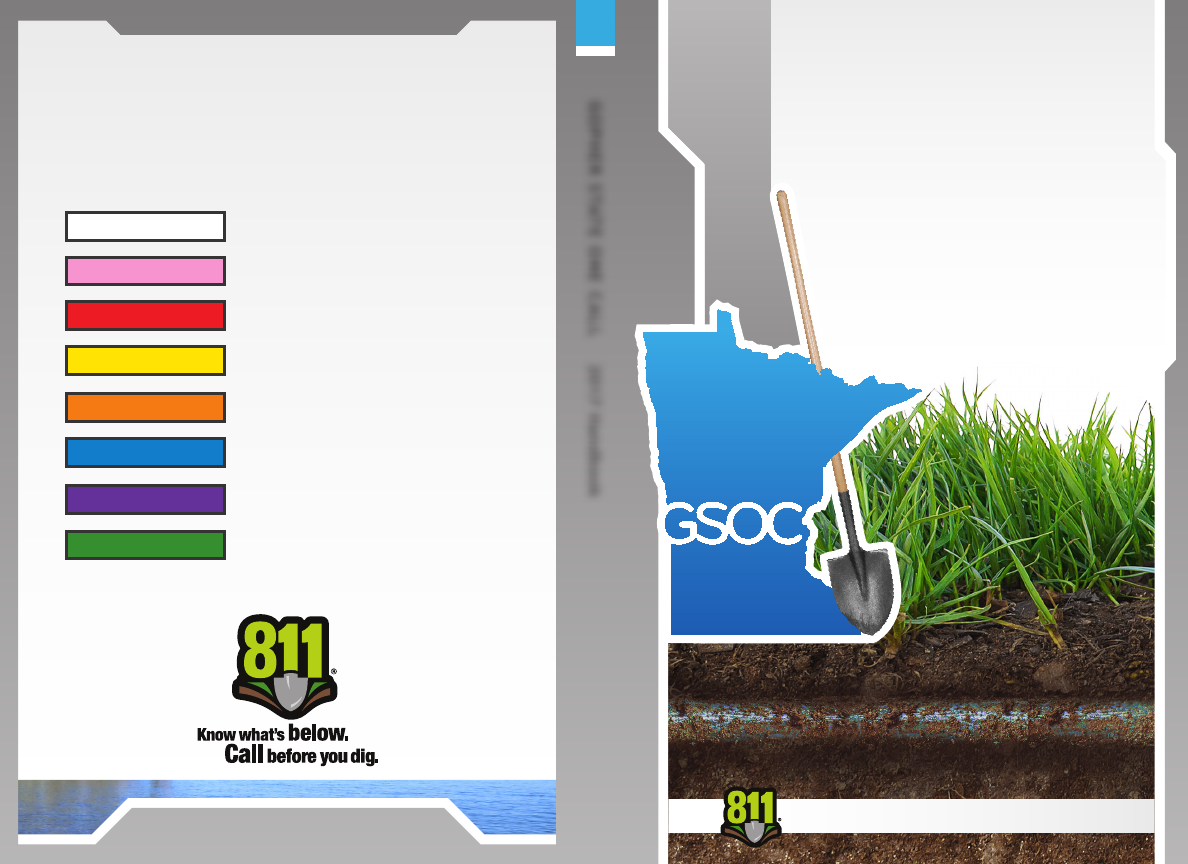
Color Code for Marking
Underground Utilities
www.gopherstateonecall.org
Area of Proposed Excavation
Temporary Survey Markings
Electric
Gas, Oil, Steam, Propane
Communication, CATV, Fiber
Water
Reclaimed Water, Irrigation
Sewer
WHITE
PINK
RED
YELLOW
ORANGE
BLUE
PURPLE
GREEN
(651)454-0002 - OR - (800)252-1166
GOPHER STATE ONE CALL 2017 Handbook
2017
Handbook
This time and every time
Gopher State One Call
www.gopherstateonecall.org

Gopher State One Call
1110 Centre Pointe Curve, Suite 100
Mendota Heights, MN 55120
Contact Information
File locate requests by phone:
Emergency
Twin Cities Metro
Greater MN Area
Nationally
File locate requests online:
To contact Customer Support:
To order promotional materials:
For general billing information:
For facility operator notication area mapping
information:
866-640-3637
651-454-0002
800-252-1166
811
www.gsocsubmit.com
651-681-7326
651-454-8388
651-454-8388
1-877-848-7472
www.gopherstateonecall.org
i
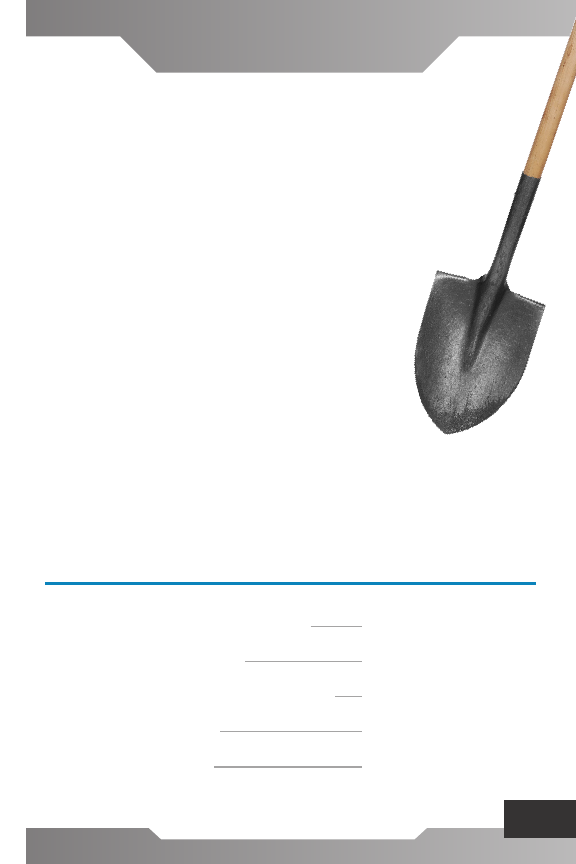
Chief Operations Ofcer
Barbara Cederberg
651-681-7307
Public Relations and Marketing
Estelle Richard
651-681-7303
GIS Coordinator (IMAP)
Jon Eardley and Jill Hayes
877-848-7472
Accounts Receivable
410-712-0082
ii
GSOC Website Shortcuts
To le locate requests online:
To search for a ticket:
To positively respond to a ticket:
To update a ticket:
To cancel a ticket:
www. gsocsubmit.org
www.gsocsearch.org
www.gsocrespond.org
www.gsocupdate.org
www.gsoccancel.org
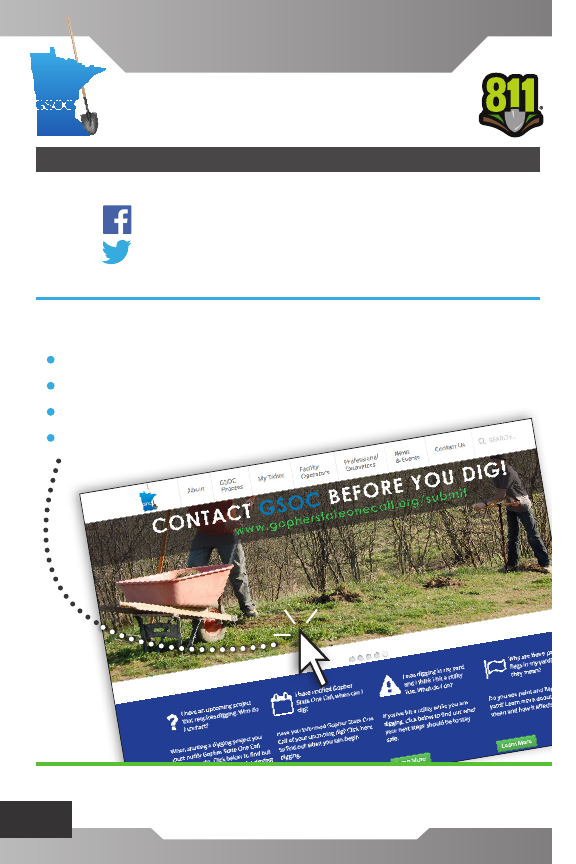
Gopher State One Call
www.facebook.com/gopherstateonecall
www.twitter.com/gopheronecall
www.gopherstateonecall.org
Visit gopherstateonecall.org for:
Placing a locate request
Training and technical resources
News and events
Much, much more!
The information contained in this manual does not have the force
of law and is only provided as guidance.
iii

Hours of Operation
GSOC can be contacted for all ticket types during the
following times:
April - October Monday - Friday, 6am - 6pm
November - March Monday - Friday, 7am - 5pm
IMPORTANT: Emergency calls are exempt from business
hours and are always accepted.
2017/2018 Holiday Schedule
Observed, Monday, Jan. 2, 2017
Monday, Jan. 16, 2017
Monday, Feb. 20, 2017
Monday, May 29, 2017
Tuesday, Jul. 4, 2017
Monday, Sep. 4, 2017
Observed, Friday, Nov. 10, 2017
Monday, Nov. 23, 2017
Friday, Nov. 24, 2017
Observed, Friday, Dec. 22, 2017
Monday, Dec. 25, 2017
Monday, Jan. 1, 2018
Monday, Feb. 19, 2018
New Year’s Day
Martin Luther King Jr. Day
Presidents Day
Memorial Day
Independence Day
Labor Day
Veterans Day
Thanksgiving Day
Friday After Thanksgiving
Christmas Eve
Christmas Day
New Year’s Day
Presidents Day
iv

Table of Contents
WHAT IS GSOC?
Gopher State One Call Responsibilities
HOW TO USE GSOC
Methods of Providing Information for
Locate Requests
The Process of Using GSOC
PRIVATE UNDERGROUND FACILITIES
What is NOT Marked
EXCAVATOR RESPONSIBILITIES
FACILITY OPERATOR RESPONSIBILITIES
TICKET TYPES
Types of Locate Requests
To Reprocess Tickets
Information Requested on a Locate
Ticket
MARKING INSTRUCTIONS
STATE LAW
MN RULES
OFFICE OF PIPELINE SAFETY
NOTES
COLOR CODE
01
04
06
07
16
34
39
48
50
56
58
77
99
100
Back Cover
v

WHAT IS GSOC?
www.gopherstateonecall.org
01
WHO WE ARE
GSOC is the one-call notification
system established to act as a
communication link between
underground facility operators,
homeowners, and excavators in
the State of Minnesota. GSOC
collects information from anyone
who is planning to excavate and transmits this
information to facility operators who may have
underground facilities near the excavation site.
After receiving a notice from GSOC, facility
operators mark the approximate location of an
underground facility with paint or flags, respond
to the ticket electronically, or determine the work
area is clear. Facility operators may then provide
a response through GSOC’s Positive Response site
for anyone to view the results of the located
underground facilities.
Gopher State One Call
Responsibilities
Disclaimer: This handbook contains GSOC’s guidelines and views concerning best
practices in use of the notification center and in maintaining safe excavation
practices. Care has been taken to make this handbook useful to as many users as
practical. Should any user notice an item believed to be inaccurate or creating
any discrepancy, the user is encouraged to contact GSOC and let us know. Only the
text of Minnesota Statutes, Chapter 216D and Minnesota Rules, Chapter 7560 have
the force of law. Users are encouraged to consult with their attorney concerning
questions of interpretation or application of the law. Questions on the enforcement
of Chapter 216D and the Minnesota Rules may also be directed to the Minnesota
Office of Pipeline Safety.

651.454.0002 - OR - 800.252.1166
02
WHAT IS GSOC?
GSOC, a non-profit organization, was formed in
1987 in response to the legislature’s adoption
of Minnesota Statutes Chapter 216D. GSOC was
approved by the Commissioner of Public Safety
in 1988 as the state wide one call center and
has served in that role ever since. Chapter 216D
requires anyone who engages in any type of
excavation using machine-powered equipment
of any kind, or explosives, to file a locate
request at least 48 hours, excluding weekends
and holidays, before excavation can begin. An
excavator may notify GSOC up to 14 calendar
days prior to excavation. The cost of GSOC
services is paid by underground facility operators.
The service provided by GSOC to excavators is free
of charge.
WHAT GSOC DOES
• Acts as the statewide notification center for
the State of Minnesota.
• Educates facility operators and excavators
about GSOC and Minnesota Statutes Chapter
216D.
• Develops and implements processes to allow
the communication between excavators,
GSOC, and facility operators.
• Maintains a database(s) of state wide maps
and facility operator underground facility
information.

WHAT IS GSOC?
www.gopherstateonecall.org
WHAT GSOC DOESN’T DO
• Physically locate and mark any underground
facilities. This is done by the facility operator
or their contract locator.
• Settle disputes and claims between excavators
and facility operators or between parties and
the regulator.
• Maintain a database of the exact location or
type of underground facilities.
• Handle facility billing, connection,
subscription, or other facility questions. These
matters are handled by the utility company or
other applicable facility operator.
• Maintain underground facilities in any way,
such as repairing damaged facilities or
tracking the depth of facilities. Please contact
the facility operator for any underground
facility questions.
03

04
Methods of Providing
Information for Locate Requests
FILE TICKETS ONLINE USING ITIC:
www.GSOCSUBMIT.org
ITIC is a full-featured,
web-based interface
providing user friendly access to enter and view
tickets 24-7. The Gopher State One Call ITIC
system allows you to map the entire worksite
using a visually-driven user interface.
ITIC allows you to:
• File locate requests via the internet 24/7.
• Save time with profiles. Create your own
template that will automatically fill out the
ticket with information you use regularly.
• Receive email confirmation of your ticket.
For mobile access, bookmark the URL
www.gsocsubmit.org on your smartphone or
tablet. A GSOC App is also available.
Remember: You are responsible for ensuring the
precision and accuracy of your locate request.
651.454.0002 - OR - 800.252.1166
HOW TO USE GSOC

www.gopherstateonecall.org
05
HOW TO USE GSOC
TELEPHONE
Locates: 651-454-0002
800-252-1166
Emergency Locates (24 hours a day): 866-640-3637
When can GSOC be Contacted?
April - October Monday - Friday, 6am - 6pm
November - March Monday - Friday, 7am - 5pm
Contact GSOC to process excavation, meet, and
non-excavation locate requests. Emergency locate
requests must be submitted by phone and may
be submitted 24 hours a day. Before contacting
GSOC, make sure all excavation information is
ready.
811
811 is another telephone
number available to contact
GSOC. 811 is helpful if you
are excavating outside of
Minnesota as it will help you
reach one-call centers in
neighboring states. To learn
more, visit www.call811.com.
Don’t assume you know what’s below. Protect
yourself and those around you. Use GSOC this
time and every time.

06
HOW TO USE GSOC
The
Process
for Safe Excavation
1) Excavator les locate
request 48 hours prior to
start of excavation, excluding
holidays and weekends
2) Gopher State
One Call processes
& submits locate
requests to facility
operators
4) Excavator digs
with care, avoiding
damages
3) Facility operators
mark excavation site or
advise if they are ‘clear’
651.454.0002 - OR - 800.252.1166
(White markings for proposed
excavations are required by
Minnesota State Law
except when it
can be shown
that it is not
practical)

What is NOT Marked:
Private Underground Facilities,
Utilities, and Distribution Networks
Private underground facilities, such as private
utility lines and private distribution networks,
do not get marked by facility operators. When a
property owner or tenant has any type of
private underground facility, they are responsible
to locate those facilities or hire someone to
locate them.
For a visual explanation of private lines, see the
inside back cover.
Private underground facilities are found
everywhere, including single family homes,
farms, multi-family housing units, businesses,
industrial areas, mobile home courts, shopping
centers, and sometimes in the road right of way.
GSOC encourages owners and operators of private
underground facilities to include those facilities
on the GSOC system. However, most private
underground facilities are not listed with GSOC.
Unless the private facility owner participates in
GSOC, private or customer owned facilities will
not be notified and may not be marked. Therefore,
it is imperative that special precautions be taken
by excavators as part of every excavation project.
www.gopherstateonecall.org
07
PRIVATE UNDERGROUND FACILITIES

08
PRIVATE UNDERGROUND FACILITIES
If private facilities are suspected, the excavator
should:
• Physically inspect the jobsite prior to entering
a locate request or even bidding the job.
• Ask the property owner.
• See what equipment or power may serve
buildings.
• Contact the original installer of the facilities
for any records or maps of the lines.
• Excavate with caution and be aware of any
warning signs of underground facilities.
• Visit www.gopherstateonecall.org/contract-
locators-directory for information on private
locating companies.
If you are installing private facilities consider
doing the following:
• Prepare maps of any new facilities.
• Bury tracer wire with the new facilities.
• Use above ground markers or signs to indicate
the buried facilities.
• Visit www.gopherstateonecall.org/how-
gsoc-works/private-facility-intro for more
information about protecting private facilities.
651.454.0002 - OR - 800.252.1166
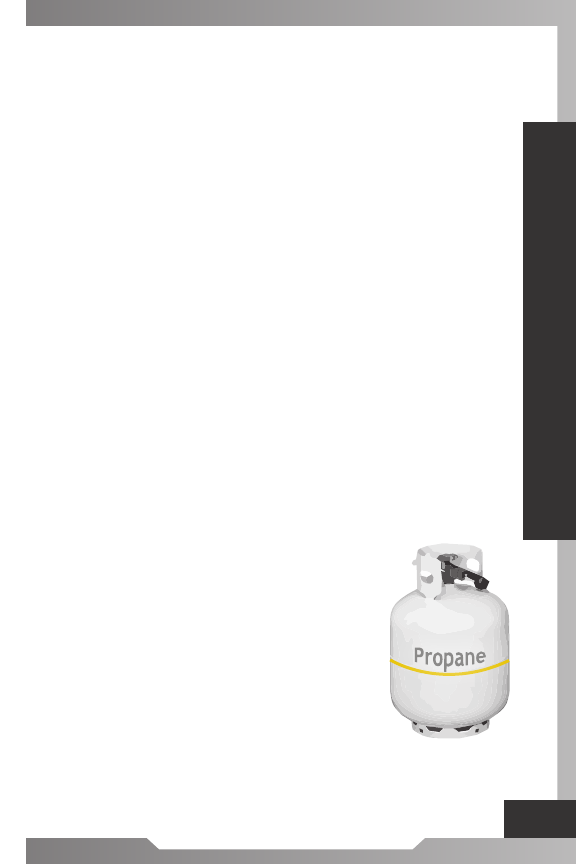
www.gopherstateonecall.org
09
PRIVATE UNDERGROUND FACILITIES
PLEASE NOTE: Facilities that run under or across
public road right of way or any other public right
of way are not “private facilities.” These facilities
are “underground facilities” within the meaning of
Minnesota Statute 216D and must be registered
with GSOC. Please contact Customer Support at
[email protected] if you
need information about registering with GSOC as a
facility owner.
PRIVATE FACILITIES can be used to convey many
different types of products. These products
fall into two broad categories: Energy Related
Facilities and Non-Energy Related.
Examples of Energy Related Private Facilities
• Fuel sources for Ag buildings or equipment
• Heating systems for pools or grills
• Electricity for out buildings or equipment
• Farm Taps
PROPANE
Propane facilities can be found in a
variety of applications in residential,
agricultural, and industrial settings.
In residential settings, propane may
be used to heat buildings, swimming
pools, grills, fireplaces, appliances, and lighting.
In agricultural settings, propane may be a fuel
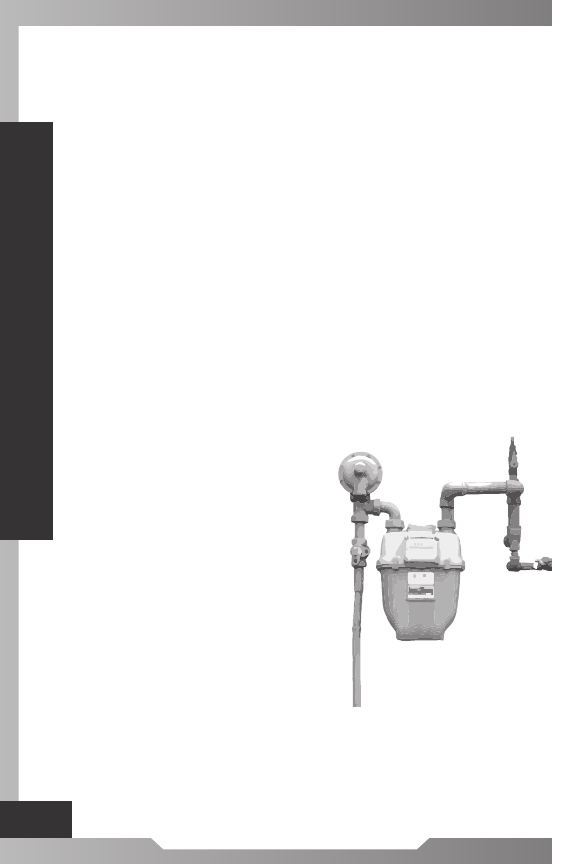
10
PRIVATE UNDERGROUND FACILITIES
Natural Gas
source for multiple farm buildings, corn dryers,
and other equipment.
Commercial and industrial locations also rely on
propane for a fuel source. This can include a wide
variety of facilities from heating to standby or
offpeak backup facilities.
Visible indications of the use of propane at a
location are above ground or buried storage tanks.
A buried propane tank usually has an exposed
location with a fitting for refilling. Remember that
a single propane tank can provide fuel for multiple
buildings, mobile homes, single family homes,
cabins, or townhomes.
For more information
about propane, please
visit the Minnesota
Propane Association at
www.mnpropane.org.
NATURAL GAS
Private natural gas lines in
a residential setting may
provide fuel for a number
of different devices.
Among them are barbecue grills, pool heaters,
yard lights or heaters in outbuildings like sheds,
garages or barns.
651.454.0002 - OR - 800.252.1166

www.gopherstateonecall.org
11
PRIVATE UNDERGROUND FACILITIES
Farm Tap
Natural gas may be delivered to a “master meter”
at multi-resident properties, such as mobile home
courts, townhome, or apartment complexes.
Buried facilities carrying natural gas between
the master meter and units on the property are
usually private facilities. As a general rule, natural
gas providers will only mark underground gas lines
from the main to the meter.
Any appliance or device fueled by natural gas
that is on the “other side” of the meter is almost
invariably served by the private facility.
For more information about natural gas, please
visit the Blue Flame Association’s website at
www.blueflame.org.
FARM TAPS
Many landowners in Minnesota
are connected directly to natural
gas pipelines. Known as “farm
taps”, these connections may be
considered private gas lines. All
the equipment from the outlet
of the meter (usually, but not always, located near
the pipeline) to the house, corn dryer, milk house, or
barn belongs to the landowner. Many landowners may
not realize that they are entirely responsible for the
operation, maintenance, repair, and locating of these
underground gas line(s).

12
PRIVATE UNDERGROUND FACILITIES
Farm taps support many farms, and as farms have
expanded, adding more houses and buildings to
the original farmstead, private lines attached
to a single tap have increased in number. These
private lines may cross a public right of way due
to new roads or easements. Unfortunately, little
to no documentation or maps of the original or
subsequently installed facilities may exist.
As the farm tap may not be evident from a visual
inspection, all landowners should specifically be
asked about the possible presence of these private
gas lines.
Excavators or landowners are encouraged to hire
a private line locator to mark the location of farm
tap lines. More information regarding farm taps
and a partial listing of Minnesota private locators
is available on our industry directory at
www.gopherstateonecall.org/private-facility-locators.
GSOC strongly recommends that specific questions
regarding farm taps be directed to the gas
provider or the Minnesota Office of Pipeline Safety
dps.mn.gov/divisions/ops.
ELECTRICITY
Like natural gas, electric service may be supplied
to a “master meter” at multi-resident properties,
such as mobile home courts, townhomes, or
apartment complexes. Any line that connects the
651.454.0002 - OR - 800.252.1166

www.gopherstateonecall.org
13
PRIVATE UNDERGROUND FACILITIES
“master meter” to another unit or device on that
property is a private facility and therefore not
marked by the facility operator.
Any property (residential or commercial) may also
have buried private electric lines serving power
to, among other things, yard lighting, power to
other areas of the property, pool heaters, or
pumps. Additionally, on residential properties or
farms, private lines may connect outbuildings
such as garages, sheds, or barns to a source of
power. Remember that the supplier of electricity
usually only marks the power line up to the
meter. If there is power in a garage or if a piece
of equipment or building is served by electricity,
make sure to look for a private electric line. If one
is present, have it professionally located before
excavating.
Although the meter set is often found at the
home or main building, in some areas it is located
on a pole or other point of
attachment. Red marks or flags
leading up to a pole but not
going on to other buildings are
indicators that there are one
or more private facilities in the
area. Also, use care where a
property is served by overhead
lines that are buried after
they enter the property. In this
Electricity

14
PRIVATE UNDERGROUND FACILITIES
situation, it may be that all underground electric
facilities are considered private at that location.
Examples of Non-Energy Related Private
Facilities:
Several other types of private buried facilities may
be found on private property that are non-energy
related facilities, but still need protection. These
types of private facilities can range from, but are
not limited to:
• Fiber optic lines
• Communications or phone lines
• Drain tile
• Irrigation lines
• Septic systems or waste collection lines
• Underground sprinkler systems
• Data communications cables
• Satellite dishes
• Invisible fences
• Low voltage landscape lighting
• Geothermal ground loops
Water, Sewer, Wells, and Septic Systems:
Most cities consider any water or sewer lines
that are connected to city services to be private
lines when extending from the right of way into
private property and therefore, any maintenance
or locating is the responsibility of the landowner.
651.454.0002 - OR - 800.252.1166

www.gopherstateonecall.org
15
PRIVATE UNDERGROUND FACILITIES
Wells and septic systems exclusively serving
a property are also considered to be private
facilities and again the landowner is responsible
for maintaining and locating the lines. A good
indication as to where these lines are buried can
be determined from where the lines leave the
main or tank and where they enter the building.
Geothermal Ground Loops: The land or property
owner should have a map of the buried ground
loops or know the contractor who installed the
loops. It is the responsibility of the property owner
to locate the loops or hire someone to locate
them.
WHAT SHOULD I DO IF I SUSPECT I HAVE PRIVATE
FACILITIES IN THE AREA OF MY EXCAVATION?
GSOC suggests that you delay any excavating
until you have all private facilities identified and
professionally marked. When a property owner
or tenant has any type of private underground
facility, they are responsible to locate those
facilities or hire someone to locate them. The
contact information for a number of private
locating companies can be found on the industry
directory at Gopher State One Call’s website at
www.gopherstateonecall.org/private-facility-
locators.
Remember: Land owners, home owners, and
tenants, tell your excavator about any private
underground lines.

16
Excavator Responsibilities
As dened in Minnesota Statute 216D, an
“Excavator is a person who conducts excavation
in the state”.
PLANNING FOR YOUR EXCAVATION
You are required to use white markings to define
the entire area where excavation will occur, unless
it can be shown it is not practical. Include a safety
buffer when marking the area.
GSOC wants you, as the excavator, to have a very
safe and successful excavation process. We suggest
that you break your excavation down into multiple
tickets if that makes it easier either for you to
describe the work or for the locator to find your
excavation site. For example, we would suggest
you follow the following guidelines:
• Limit your ticket to a contiguous excavation
area. Avoid the temptation to try to include
two different excavation areas on one ticket.
We suggest that even if the projects are
related or part of the same job that you break
them down into separate tickets.
• When working along a stretch of roadway,
ticket worksites must keep to 5 linear miles.
• When working within an area, ticket
worksites must not cross a roadway and must
keep to an area that is 5 miles in perimeter.
651.454.0002 - OR - 800.252.1166
EXCAVATOR RESPONSIBILITIES

www.gopherstateonecall.org
17
EXCAVATOR RESPONSIBILITIES
Use common sense when defining your excavation
area. Even if it is a contiguous single project, a
ticket covering a mile, 250 trees, or 200 signposts
is not a good idea. You want to help the facility
operator know where you will be excavating. Make
the job easier by using white markings at each
excavation site and breaking down the work area
into segments that will be more understandable.
Also, think about the facility operator’s work
schedule. If the work will happen in stages, stage
your tickets so that your marks will be fresh when
you enter the area.
• GSOC reserves the right to put limits on ticket
excavation area size as situations come to its
attention.
• Remember you can contact GSOC up to 14
calendar days in advance.
• Prepare the information for your excavation
site prior to submitting a ticket to GSOC. For
example, when submitting a locate ticket,
you will be asked to give detailed marking
instructions for the specific area where
locates are needed. You may also be asked for
driving directions to the work site.
• If you fail to have this information before you
contact GSOC your request may be suspended
until you obtain complete information. To
prevent this, please plan ahead.

NOTIFYING GSOC
All Minnesota excavators, including homeowners
and farmers, are responsible for notifying GSOC
of their proposed excavations so facility operators
with underground facilities near the excavation
site can be informed of pending excavation.
Each excavator must have their own ticket.
GSOC reminds you that anyone excavating
in Minnesota must have their own one-call
ticket. If you are a subcontractor and you are
excavating, protect yourself and your company
by obtaining your own one-call ticket. The
general contractor’s ticket does not apply to
subcontractors.
You must contact GSOC to provide information
necessary to complete a locate ticket at least
48 hours (not including weekends and holidays)
before excavating. You may contact GSOC up to
14 calendar days prior to beginning excavation
to provide facility operators additional time to
mark the area of proposed excavation.
When your locate ticket is complete, you will be
given a ticket number. Keep this ticket number
to track which facility operators have responded
to your one-call request.
18
EXCAVATOR RESPONSIBILITIES
651.454.0002 - OR - 800.252.1166

www.gopherstateonecall.org
19
EXCAVATOR RESPONSIBILITIES
ALWAYS USE THE CORRECT WORK TYPE ON
YOUR TICKET: EXAMPLES OF TYPES OF WORK
If installing multiple facility types: select one as
your work type and then note all facility types in
the remarks sections.
Avoid the use of “Other-See Marking Instructions”
and select the most descriptive work type:
If installing a street light pole: Electric
If building a retaining wall: Landscaping
Anode
CATV Line
CATV Main
CATV/Service
Concrete
Sidewalk
Concrete Slab
Construction
Culvert
Deck
Ditch
Drain Tile
Driveway
Egress
Window
Electric Line/
Electric Main/
Electric Service
Fence
Fiber Line
Fiber Main
Fiber Service
Gas Line
Gas Main
Gas Service
Geothermal
Ground Loops
Landscaping
Mailbox
Manhole
New Home
Construction
Other – See
Remarks
Phone Line
Phone Main
Phone Service
Pipeline
Pole/Anchor
Real Estate Sign
Road
Construction
Septic
Sewer Line
Sewer Main
Sewer Service
Sign(s)
Site Grade
Soil Borings for
Testing
Sprinkler
System
Stump
Grinding/
Removal
Tent
Tree(s)
Water Line/
Water
Main/Water
Service
Well

20
If installing patio or pavers: Concrete Slab
If grinding or repairing asphalt: Road Construction
If installing invisible fence: Fence
If grading or skid steer work: Site Grade
If installing or removing sidewalks: Sidewalk
Any construction or remodeling: Construction
ALWAYS CHECK THE STATUS BEFORE YOU
EXCAVATE
Many people believe that by notifying GSOC of
intended excavation they have completed all of
their responsibilities in the one-call process. This
is not the case, notifying GSOC is only a step in
the process.
Please provide an email address when you file
a ticket with GSOC. GSOC will email you a
copy of your ticket. Please carefully review all
information on your ticket. It is important that
we have received and interpreted your ticket
information correctly. Pay particular attention to
similar sounding street names, and whether you
are physically located in a town or a township. If
there are any necessary changes to your ticket,
promptly contact GSOC. Depending on the nature
of your change you may need to either update or
cancel that ticket.
Your ticket also contains information on all
underground facility operators who have
requested to be notified of excavation in a
EXCAVATOR RESPONSIBILITIES
651.454.0002 - OR - 800.252.1166

www.gopherstateonecall.org
21
EXCAVATOR RESPONSIBILITIES
particular geographic area. Under Minnesota Law
an underground facility operator can respond to
a ticket in several ways. First, the underground
facility operator may either mark the underground
facilities in the field, or place a clear/no conflict
flag(s) in the field. Alternatively, the underground
facility operator may respond through GSOC’s
positive response system.
GSOC’s positive response system is accessible to
you and we recommend that you review it prior to
commencing any excavation in the field. You can
access the GSOC positive response information by
going to www.gsocsearch.org. Please remember
that an underground facility operator may
also mark or clear in the field so the responses
in GSOC’s system may be supplemented by
information you observe in the field.
If the facility operator cannot complete marking
of the excavation or boundary survey area before
the excavation or boundary survey start time
stated in the notice, the operator shall promptly
contact the excavator or land surveyor.
The following ticket responses are used in GSOC
positive responses:
Not Yet Responded – Facility operator has not
yet responded to the ticket. Please note that
the facility operator has not given clearance
to excavate if you see this response on a

22
ticket. Look for marks or clear flags in the
field. GSOC recommends that if you see this
on a ticket and do not find marks or clear
flags in the field, that you contact the facility
operator directly to determine if it is safe for
you to excavate.
Clear/No Conflict – If this is reflected on the
ticket, the underground facility operator
has indicated that the area identified on the
ticket (but not any other area) is clear of
underground facilities. Please note when the
excavator marked the excavation area in
white paint, then only the area identied
in white paint is cleared and not the entire
address identied on the ticket.
Marked – This indicates that the area is marked
in the field. Please confirm that marks are
in fact in the field and if missing, do not
excavate until the discrepancy is resolved.
Marking Will Be Delayed – This response is used
by underground facility operators when an
unexpected situation has been experienced
that will not allow the underground facility
operator to mark prior to the legal start date.
If this situation has not been resolved prior to
the legal start date do not start excavating.
Contact the facility operator and determine
why the facility has not either been cleared or
marked. Until the situation has been resolved
EXCAVATOR RESPONSIBILITIES
651.454.0002 - OR - 800.252.1166

www.gopherstateonecall.org
23
EXCAVATOR RESPONSIBILITIES
with the underground facility operator an
unsafe condition may exist in the field.
Please note GSOC cannot resolve an issue
between an underground facility operator and
an excavator regarding marking or positive
response.
Not Complete/In Progress – This response is
used when the locator has begun the process
of locating underground facilities but that
process is not yet complete. It may be used
on an interim basis to indicate that some
markings are in place but others will be added
later. This response means that the locator has
not completed work and excavation should not
begin.
Please note that prior to the legal start date of
a ticket that the underground facility operator
may, and frequently does, update or change
the status of the positive response listed with
GSOC. Furthermore, many facility operators have
multiple responses for a single ticket, and may list
different departments or underground facilities
operated by that same operator separately.
Therefore make sure that each underground
facility has been marked or cleared before you
commence any excavation.
GSOC recommends that you keep a copy of the
ticket in the field and that all field personnel are
familiar with the scope of work for which the
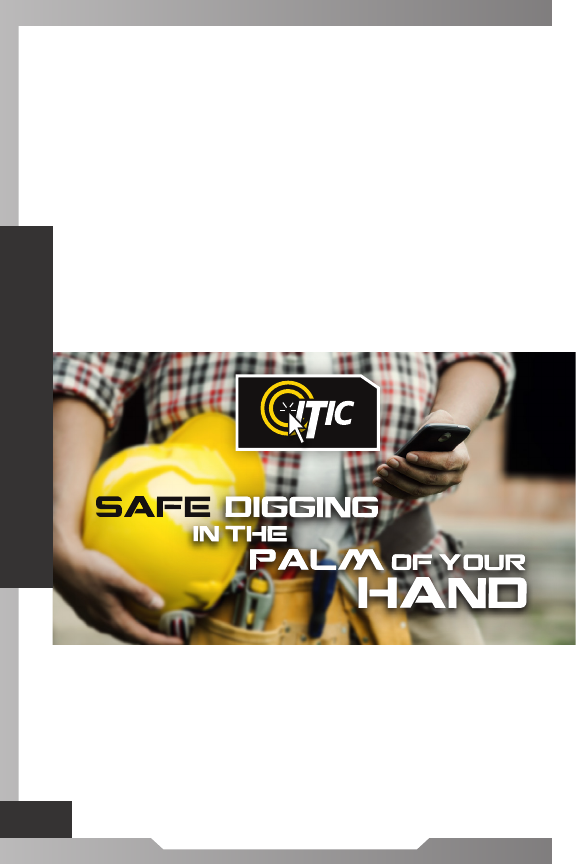
ticket was issued, the type of work it covers, and
the response status for each facility operator.
GSOC provides a variety of ways for an excavator
to view a ticket, even in remote locations.
CONDUCTING AN EXCAVATION
Remember: Always check for private facilities.
While working at the excavation site, have your
locate ticket with you. You can access your ticket
information anywhere you have mobile or web
access at www.gsocsearch.org.
If after you start excavating you determine that
your excavation will need to move beyond the
original area described in your ticket, you must
submit a new ticket for the expanded area.
24
EXCAVATOR RESPONSIBILITIES
651.454.0002 - OR - 800.252.1166

During the course of excavating, it is the
excavator’s responsibility to inspect and support
all facilities that have been exposed. If during
your excavation, equipment comes in physical
contact with an underground facility, even if
there is no noticeable damage, you must stop
the excavation and contact the facility owner. If
damage occurs, it is the excavator’s responsibility
to immediately notify the facility owner directly.
This damage could include the pulling or kinking of
the facility or damage to the protective coating,
covering, or tracer wire.
The excavator is responsible for reasonably
protecting and preserving locate markings
until no longer required for proper and safe
excavation near the underground facilities.
If the excavator has reason to believe locate
markings are obliterated, obscured, missing, or
incorrect, the excavator must notify the facility
operator to refresh or remark the locate area.
The excavator can also contact GSOC to update
a valid ticket. It is important that all facilities be
marked or cleared prior to excavating.
EXCAVATING WITHIN A TOLERANCE ZONE
Excavators are required to maintain a minimum
horizontal (side to side) clearance of 2
feet (24”) between an unexposed facility and
the cutting edge or point of any power operated
excavating or earthmoving equipment.
www.gopherstateonecall.org
25
EXCAVATOR RESPONSIBILITIES
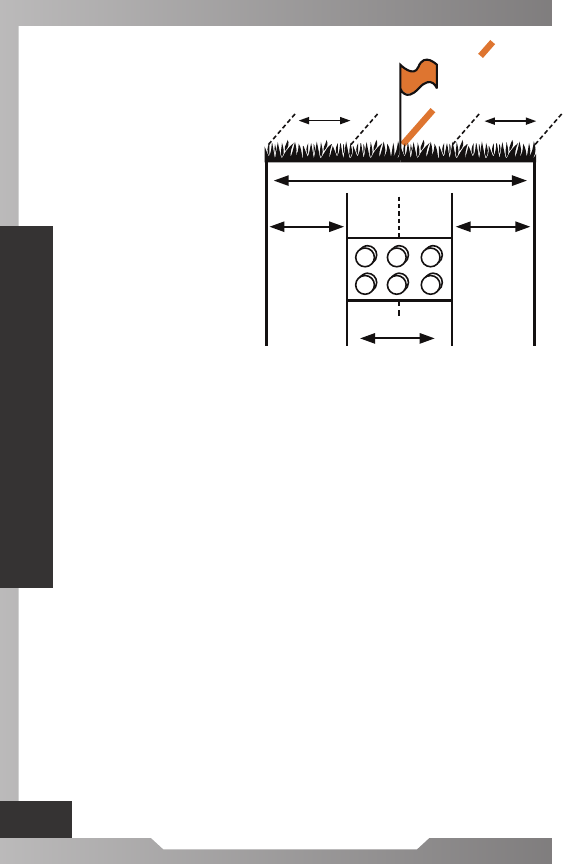
26
EXCAVATOR RESPONSIBILITIES
651.454.0002 - OR - 800.252.1166
For example: if the
markings indicate a
20” pipe is buried,
the hand dig zone
is 68” wide (24”
+ 20” + 24”).
If excavation
is required
within the hand
dig zone, the
excavation must
be performed
very carefully.
Consider the
use of vacuum excavation or hand tools. The
excavator is also responsible to excavate without
damage to the facility or undermining the lateral
support. Excavators are reminded that the depth
of an underground facility may vary due to
installation practices, changes in grade, frost,
erosion and other variables. Therefore, any depth
readings given by a locator, if given at all, are only
an estimation of the depth of the facility and the
excavator is still responsible to safely expose the
facility without damage.
HAND DIG WITH CARE
Minnesota Law requires the use of hand tools (or
vacuum excavation) when excavation will take
place within the Tolerance Zone. GSOC reminds
you to use care when you are excavating within
24” 24”
24”
24”
20”
LOCATION
TOLERANCE ZONE
Hand Dig
Hand Dig
LARGE PIPE OR MULTIPLE DUCTS
Hand Dig Hand Dig
TELEPHONE
GAS
24”
Hand Dig
24”
Hand Dig
24” 24”
LOCATION
TOLERANCE ZONE
Hand Dig
Hand Dig
SMALL PIPE OR CABLE
TOLERANCE ZONE
20”

www.gopherstateonecall.org
27
EXCAVATOR RESPONSIBILITIES
this “Hand-Dig Tolerance Zone.” Respect the
marks to protect yourself and the integrity of
underground facilities. GSOC accepts all locate
requests from excavators who plan on using only
hand tools.
GSOC also advises you that although hand tools
are exempt from the requirement to contact GSOC
before you excavate, it is highly recommended
for you to have underground facilities marked
even when using hand tools. The use of hand tools
may pose a threat to
you, others, and
underground
facilities.
Damages have
occurred to
underground
facilities
when working
with metal
objects that
are pounded or
screwed into
the ground,
even by hand.
For example, tent stakes, anchor bolts, form pins,
metal probes, survey stakes, hand augers, political
signs, and many other objects use sharp metal ends
capable of damaging underground facilities.
24” 24”
24”
24”
20”
LOCATION
TOLERANCE ZONE
Hand Dig
Hand Dig
LARGE PIPE OR MULTIPLE DUCTS
Hand Dig Hand Dig
TELEPHONE
GAS
24”
Hand Dig
24”
Hand Dig
24” 24”
LOCATION
TOLERANCE ZONE
Hand Dig
Hand Dig
SMALL PIPE OR CABLE
TOLERANCE ZONE
20”
24” 24”
24”
24”
20”
LOCATION
TOLERANCE ZONE
Hand Dig
Hand Dig
LARGE PIPE OR MULTIPLE DUCTS
Hand Dig Hand Dig
TELEPHONE
GAS
24”
Hand Dig
24”
Hand Dig
24” 24”
LOCATION
TOLERANCE ZONE
Hand Dig
Hand Dig
SMALL PIPE OR CABLE
TOLERANCE ZONE
20”

28
EXCAVATOR RESPONSIBILITIES
651.454.0002 - OR - 800.252.1166
AGRICULTURAL EXCAVATION
GSOC asks anyone excavating on a farm or in other
agricultural settings to take extra precaution and
understand when they should file a locate request
with GSOC. You are conducting “excavation”
within the meaning of Minnesota Statutes 216D
whenever you disturb the soil by any mechanical
or hydraulic means. Two narrow exceptions may
apply in agricultural settings that carve out
situations where you do not need to contact GSOC:
• plowing, cultivating, planting, harvesting, and
similar operations in connection with growing
crops, trees, and shrubs, unless any of these
activities disturbs the soil to a depth of 18
inches or more;
• planting of windbreaks, shelterbelts, and tree
plantations, unless any of these activities
disturbs the soil to a depth of 18 inches or
more.
GSOC reminds you that anytime you use explosives
you must contact GSOC. You can also contact
GSOC any time, even if you are conducting hand
digging or an exempt activity.
In an agricultural setting the following types of
work are not exempt and require contacting
GSOC:
• Fencing
• Well drilling

www.gopherstateonecall.org
29
EXCAVATOR RESPONSIBILITIES
• Burying a wire, pipe or anything else
• Digging a foundation
• Setting a pole
• Cultivating, plowing or any field activity to a
depth greater than 18”
• Installing drain tile
• Installing or extending a farm tap
• Any contouring, grading or changing of the
land
• Installing soil monitoring probes to a depth
greater than 18”
In addition, please keep in mind that underground
facilities may be present on a farm or agricultural
property that are not located by underground
facility operators. These private facilities must be
located by either the owner of the property or the
party conducting the excavation.
WHEN DAMAGE OCCURS
Minnesota law requires that if damage occurs to
an underground facility or its protective coating
the excavator shall notify the operator promptly.
Damage is dened as any impact with the
underground facility. An excavator cannot make
an independent determination of if damage has
in fact occurred, that must be done only by the
facility operator.

30
EXCAVATOR RESPONSIBILITIES
651.454.0002 - OR - 800.252.1166
In addition to notifying the underground facility
operator if damage occurs, excavators shall:
• If the damage results in the escape of any
flammable, toxic, corrosive gas or liquid the
excavator must immediately notify 911.
• If the damage results in a situation that
endangers life, health or property the
excavator must also immediately notify 911.
• In either of these situations, the excavator
must also attempt to minimize the hazard
until emergency responders arrive and
complete their assessment of the situation.
That may require the excavator to secure the
scene or evacuate people from the hazard.
• As soon as practical, notify the underground
facility operator. Many underground facility
operators list phone numbers on their
permanent markers. Telephone numbers for
underground facility operators are also listed
on your GSOC ticket.
• Take pictures of the site if safe to do, so
that documentation is created for future
reference.
• GSOC suggests operators have emergency
training procedures in place for their field
personnel for how to assess and respond to
emergency situations in the field.

www.gopherstateonecall.org
31
EXCAVATOR RESPONSIBILITIES
In all other situations the excavator must
determine whether the damage has resulted in
any risk to the public and take necessary action
until representative(s) from the underground
facility operator take control of the situation. The
law requires any repair may only be performed
by qualied personnel authorized by the
underground facility operator. The excavator
can never backfill or bury a damaged underground
facility.
An “emergency” is dened by Minnesota State
Statute 216D.01 subdivision 3 as “a condition
that poses a clear and immediate danger to life,
health or signicant loss of property.” Please
note that work-scheduling problems or customer
demands are not considered an emergency.
GSOC reminds you to call 911 whenever there
is a release of flammable, toxic or corrosive gas
or liquid, or if a dangerous situation has been
created.
Examples of emergencies:
A. An unforeseen excavation necessary in
order to prevent a condition that poses clear
and immediate danger to life or health.
Emergency Excavations

32
EXCAVATOR RESPONSIBILITIES
651.454.0002 - OR - 800.252.1166
B. An excavation required to repair a service
outage.
C. An excavation required in order to prevent
signicant and immediate property damage.
D. The repair of an existing unstable condition
which may result in an emergency.
Emergency locates should be given top priority
by utilities. An excavator must maintain
a continuously staffed telephone number
throughout the emergency.
Gopher State One Call reminds excavators that
upon receiving an immediate emergency notice,
the facility operator must contact the excavator
within one hour by telephone and is required
to visit the job site, locate and mark within
three hours of receiving the notice, unless the
circumstance dictates otherwise.
ABANDONED FACILITIES
Facility owners are required to maintain
maps, drawings, diagrams or other records
of any abandoned or out of service underground
facilities. It is the facility owner’s responsibility to
give the excavator any known information about
the abandoned facilities’ location.
A

www.gopherstateonecall.org
33
If the facility owner notifies the excavator at the
job site that abandoned facilities exist, the above
symbol should be used, either painted on the
ground or on a locate flag. The capital A inside
a circle represents abandoned facilities. The
symbol should be painted or put on a flag in the
same APWA color as is required for marking the
underground facilities. For example, if this symbol
were found on a yellow flag it would represent an
abandoned gas, oil or steam line.
Even though the facility may be abandoned, it
remains the property of the underground facility
operator. As an excavator, you may not remove
that abandoned facility from the ground without
prior permission from the facility operator.
When notified of abandoned facilities existing
in your proposed work site, gather as much
knowledge and information as you can about the
abandoned facility (i.e. type, size, color, material,
location, and possible depth).
EXCAVATOR RESPONSIBILITIES

34
FACILITY OPERATOR RESPONSIBILITIES
651.454.0002 - OR - 800.252.1166
RESPONDING TO A LOCATE TICKET
After receiving an excavation locate ticket
the facility operator must locate underground
facilities prior to the legal excavation start date
and time on the ticket, unless it is otherwise
agreed or an on-site meet is requested. GSOC will
issue the start time requested by the excavator
as long as the time requested allows the facility
operator at least 48 hours (excluding weekends
and holidays) to do the following:
• Physically locate and mark the horizontal
location of underground facilities within the
excavation site according to the American
Public Works Association (APWA) color codes;
or
If the underground facilities at the excavation
site cannot be located prior to the legal start
date, contact the excavator.
• Immediate response emergency excavation
tickets are given top priority. Facility
members will contact the excavator
within one hour via the telephone, and if
underground facilities need to be marked, be
there within three hours.
Facility Operator
Responsibilities
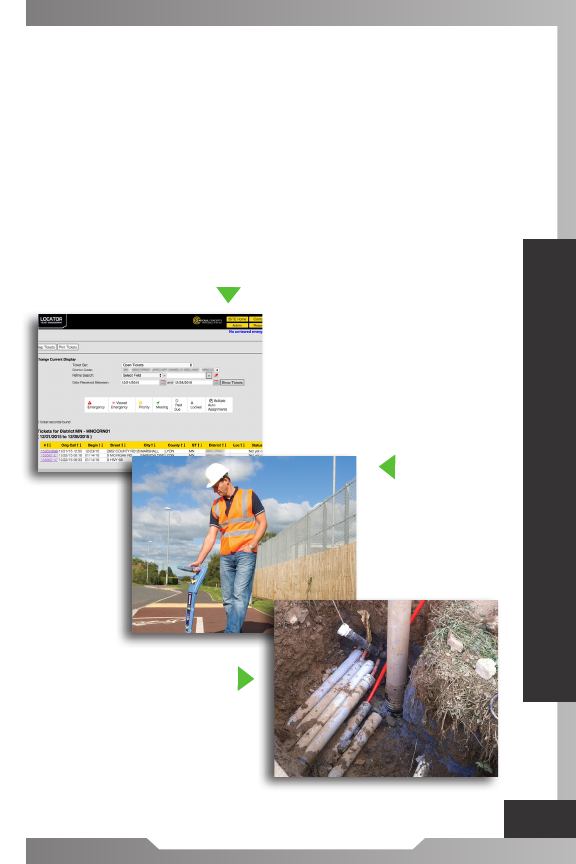
www.gopherstateonecall.org
35
If excavation, demolition or weather conditions
change the locate marks and they are believed
to be obliterated, obscured, missing or incorrect,
the excavator shall notify the facility operator.
The GSOC notification center may be re-contacted
to have the facility operator verify, refresh, or
remark the locate. It is important that all facilities
be marked or cleared prior to excavating.
FACILITY OPERATOR RESPONSIBILITIES
Facility Operator
Responsibilities
Positive Response
Guidelines for Marking
Underground Facilities
Abandoned Facilities

36
POSITIVE RESPONSE
Underground facility operators must respond to
every ticket they receive from GSOC, even if there
are no underground facilities in the excavation
area. Under Minnesota law a facility operator may
either respond in the field or through GSOC. You
can view the response of facility operators using
the GSOC positive response system at:
www.gsocrespond.org. If the facility operator
cannot complete marking of the excavation or
boundary survey area before the excavation or
boundary survey start time stated in the notice,
the operator shall promptly contact the excavator
or land surveyor.
GUIDELINES FOR MARKING UNDERGROUND
FACILITIES
Underground facility operators should use the
recommended guidelines for uniform temporary
markings of underground facilities as approved by
the Common Ground Alliance
www.commongroundalliance.com when marking
the horizontal route of an underground facility.
The operator of an underground facility should
be indicated by initials or by name along with the
marks indicating the horizontal location of the
underground facility.
When known, the total number of lines within the
FACILITY OPERATOR RESPONSIBILITIES
651.454.0002 - OR - 800.252.1166

www.gopherstateonecall.org
37
ground should be indicated. The number of lines
indicated should be based on the actual number
of physical lines. Multiple cables twisted together
to form a single facility, as in the case of electric
lines, would be considered one cable for a locate
purpose. If separated in the soil, they should be
considered separate facilities.
If a facility is in a duct bank or a duct structure, a
corridor marker may be used. The corridor marker
should indicate the approximate width of the
facility.
A marking resembling the capital letter “H” lying
on its side will indicate the corridor marker. Other
times the word “Duct” or “Conduit” is used.
When there is a strong likelihood that the marks
may be destroyed, the contractor may want to
request offset markings. Offsets are indicated
on a permanent surface or stakes and are placed
parallel to the facility. The offset should indicate
the distance from the offset to the facility and
should identify the facility owner and if necessary
the size of the facility.
The width of the facility must be indicated if it is
greater than 8 inches wide.
“Utility Name or Initials, 36”
FACILITY OPERATOR RESPONSIBILITIES
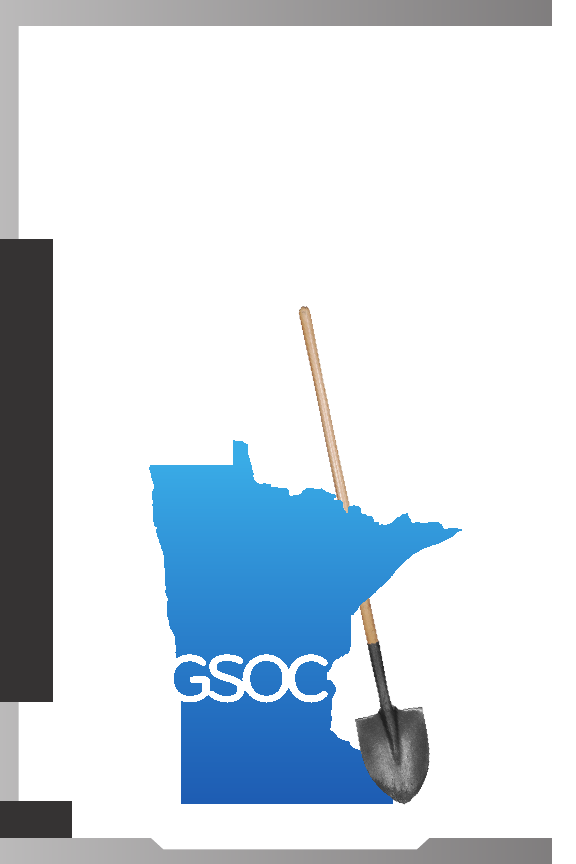
38
FACILITY OPERATOR RESPONSIBILITIES
651.454.0002 - OR - 800.252.1166
ABANDONED FACILITIES
Facility owners are required to maintain maps,
drawings, diagrams or other records of an
underground facility that is abandoned or out-of-
service. It is the facility owner’s responsibility to
give the excavator any known information about
the abandoned facilities location.
Please refer to this manual under “Excavator
Information” for Abandoned Facilities Requirements.

www.gopherstateonecall.org
39
TICKET TYPES
Types of Locate
Requests
EXCAVATION TICKET TYPES
Locate Request (normal)
Emergency Locate
Meet Request
NON-EXCAVATION TICKET TYPES
Owner Inquiry
Non-Excavation Ticket
Engineering/Pre-Con Meet
Boundary Survey
TO REPROCESS TICKETS
Correction
Cancellation
Update
Excavation Ticket Types
LOCATE REQUEST (NORMAL)
Use this for standard excavation projects.
Locate requests are the most common type of
request processed at GSOC. This type of ticket
must be requested by the excavator at least 48
hours (excluding weekends and holidays) and
up to 14 calendar days from the planned start

40
TICKET TYPES
651.454.0002 - OR - 800.252.1166
of excavation. The ticket is valid for 14 calendar
days from the start date and time stated on
the ticket, unless the locate markings become
obscured or obliterated.
The excavator and operators can also make
arrangements to periodically verify or refresh the
marks, in which case the ticket is valid for up to
six months from start time stated on the notice.
EMERGENCY LOCATE
As dened by Minnesota Statute Chapter 216D.01
subdivision 3, emergency locates are used for
“a condition that poses a clear and immediate
danger of life or health, or signicant loss of
property.”
Note: GSOC does not determine whether
an emergency condition exists. If a ticket is
submitted to GSOC as an emergency we have no
choice but to process it as such.
When receiving an emergency notice, facility
operators will locate and mark the facility
unless otherwise agreed between the parties, or
contact the excavator at the continuously staffed
telephone number provided on the emergency
notice and confirm that no underground facility
exists within the area of proposed excavation.
There are two types of emergency locates:
• Immediate Emergency

www.gopherstateonecall.org
41
TICKET TYPES
• Scheduled Emergency
Examples of Immediate Emergencies:
• An unforeseen excavation necessary in order
to prevent a condition that poses clear and
immediate danger to life or health.
• An excavation required in order to prevent
significant and immediate property damage.
• The repair of an existing unstable condition
that may result in an emergency.
GSOC reminds you to first call 911 whenever there
is a release of flammable, toxic or corrosive gas
or liquid, or a dangerous situation is created.
Next, contact the facility operator involved in the
emergency, then contact GSOC.
Examples of Scheduled Emergencies:
• A leaking water main that will be fixed the
next morning.
• A power pole being replaced the next day.
• A water well repair.
MEET REQUESTS
Use this ticket type to request the facility
operator to physically meet at the excavation
site.
A meet should only be requested when it is
difficult to precisely define the location of the
excavation site in a routine locate request. The

42
use of white markings can often be used to avoid
the time and cost of a meet. Even if a meet is
ultimately necessary, the use of white markings is
required so that there is a clear understanding of
the work to be done in the field, and its precise
location.
The Minnesota Rules in 7560.0350 sets forth the
requirements for a meet.
GSOC will ask additional questions of you including
the approximate location of the worksite. Please
note that the presence of a specific geographic
area on a ticket does not replace the need of the
operator or locator to attend the meet.
The information in the ticket may be only part
of the work, may not encompass all of the work
or may be missing other information provided to
operators and locators at the meet. Please attend
the meet and do not guess based solely on the
information set forth on the ticket.
The scheduling of a meet request does not mean
that the work site will be marked at the time of
the meet. When the meet time is requested, the
meet time must be at least 48 hours (excluding
weekends and holidays) after contacting GSOC.
The excavation start time must be at least
24 hours after the proposed meet date and
time (again excluding weekends and holidays).
For example, if you contact GSOC at 11am on
TICKET TYPES
651.454.0002 - OR - 800.252.1166

www.gopherstateonecall.org
43
TICKET TYPES
Thursday (and the subsequent Monday is not a
holiday) the soonest the meet can occur (assuming
no need to reschedule) is 11am the following
Monday, and the excavation cannot begin before
11am on Tuesday.
Excavators are reminded that all meets are
tentative and subject to change. GSOC cannot
make binding appointments on behalf of facility
operators. If the facility operator or locator
cannot make the proposed meet time, it is
important that you provide a telephone number
that is staffed, so they may contact the excavator
to make other arrangements that work best for
each party.
GSOC will only schedule a tentative meet location
within the area for which excavation is proposed.
If the parties desire to physically meet in a
location outside the boundaries of the proposed
excavation, they are required to coordinate that
alternative location among themselves. All parties
are reminded to be at the meet on time.
GSOC encourages excavators to prepare prior to
the meet. At the meet, the excavator shall inform
the facility operators and locators of the precise
geographic location of the work (which must
be within the area described on the ticket),
the timetable, scope of work, and any other

44
information needed so that the facility operator
or locator can protect the underground facilities.
Excavators need to anticipate changes in the
job site, weather, or other conditions that may
change the direction or nature of the work and
communicate those changes so that the facility
operators and locators can adjust their protection
efforts.
MN Rule 7560 requires the excavator to maintain
written documentation of each meet. The rules
require that at a minimum this documentation
include:
• The date and time of each meet.
• The names, company affiliations and contact
information for each attendee at each meet.
• A diagram, sketch, or description of the
precise excavation locations, dates and times.
• Agreed schedule of any future meets or
communications.
GSOC recommends that this documentation
be started prior to the meet itself, so that the
written diagrams or sketches and timetable can
be handed out by the excavator at the start of the
meet.
Engineering drawings and other detailed
information is encouraged so that all parties
clearly understand the work site. Pictures taken
at the time of the meet, or of markings made
TICKET TYPES
651.454.0002 - OR - 800.252.1166

www.gopherstateonecall.org
45
TICKET TYPES
after the meet, may be helpful as part of the
documentation process.
An excavator meet form has been developed to
assist in documenting the meet. The downloadable
form can be found at www.gopherstateonecall.
org/meet-documentation under Excavation
Services.
Non-Excavation Ticket Types
OWNER INQUIRY (INFORMATION) REQUEST
Use this request to obtain a list of facility
operators in an area when you do not intend to
excavate. No ticket is issued.
Owner inquiries are used to provide a list of
underground facility owners and contact phone
numbers to engineers, architects, surveyors,
planners, or a person soliciting bids or entering
into a contract for future excavation and who
does not require field marks or a meeting at the
proposed job site. GSOC will provide contact
information and any special handling notes
supplied by the underground facility owner.
These owner inquiries are not released to facility
operators. No excavation can be conducted on
Owner Inquiry Information Requests.
NON-EXCAVATION TICKET
Use this type of ticket to request facility markings

onsite or a map of underground facilities during
the design phase.
MN State Statute 216D.04 subdivision 1(A) requires
contacting GSOC in many circumstances involving
contract bid proposals. The law refers to these as
“Plans for Excavation.” This ticket type is a way
for engineers, architects, surveyors, planners,
or any person soliciting bids or entering into
a contract for excavation to obtain the type,
size, and general location of the facilities. No
excavation whatsoever can be conducted on this
type of ticket.
Once the facility operator receives the Non-
Excavation Ticket, they must provide the
requested information within 15 working days.
Notification can be provided by either performing:
1. An actual field locate at the job site, and/or
2. Providing maps or diagrams of the facilities.
The information obtained from the affected
operators must be submitted with the final
drawing used for the bid or contract and must
state the utility quality level of that information.
ENGINEERING/PRE-CON MEET TICKET
Use this type of ticket to meet with facility
operators during all design and preconstruction
phases of a project.
46
TICKET TYPES
651.454.0002 - OR - 800.252.1166
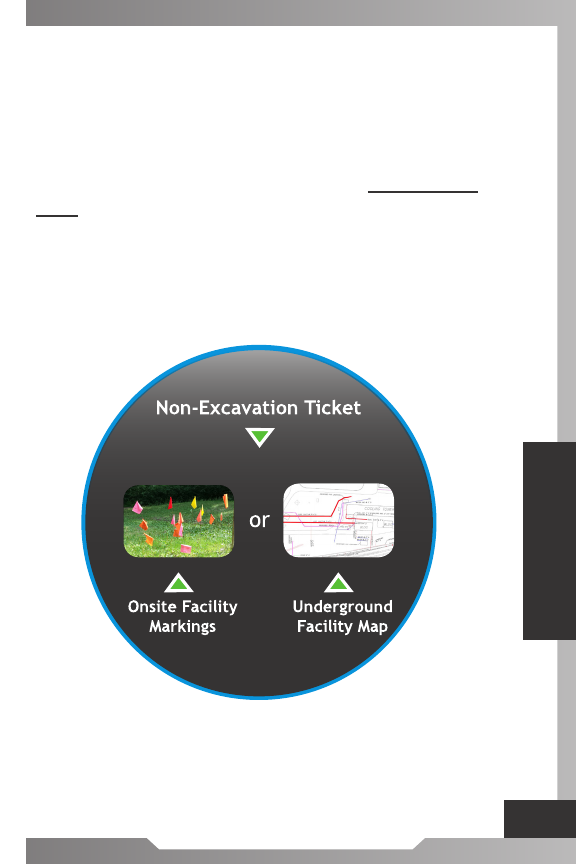
www.gopherstateonecall.org
47
TICKET TYPES
Engineering/Pre-Con Meet Tickets are used when
a person is required to comply with Minnesota
Statutes 216D.04 subdivision 1a (C) and (D) by
holding a design meeting at a proposed future
excavation site with potentially affected facility
operators in the area. A minimum of 15 working
days must be allowed by callers requesting
an Engineering/ Pre-Con Meeting. Facility
operators shall attend these meetings or make
other arrangements to provide information. No
excavation whatsoever can be conducted on this
type of ticket.
BOUNDARY SURVEY
If you are a licensed land surveyor, use this type
of ticket to request facility markings.

48
A boundary survey is another type of a
nonexcavation ticket processed by Gopher State
One Call. By law, underground facility operators
must respond to a Boundary Survey request within
96 hours. The facility operator must perform
an actual eld locate unless both parties agree
otherwise. No excavation whatsoever can be
conducted on this type of ticket.
To Reprocess Tickets
CORRECTION
Request a Correction to an existing ticket if you
need to correct minor information such as field
contact name or phone number. Correction cannot
be used for changes to the street address of
work site and/or marking instructions. The ticket
number will not be changed.
CANCELLATION
Submit a Cancellation request for an existing
ticket if you no longer plan on performing the
excavation or need the ticket. If you have
provided your email address, you will receive a
copy of the cancelled ticket. The cancelled ticket
will have the same ticket number as the original
ticket and will be labeled Cancellation.
UPDATE
Submit an Update to an existing ticket if you want
to...
TICKET TYPES
651.454.0002 - OR - 800.252.1166

www.gopherstateonecall.org
49
1. Make changes to an existing ticket that
include changes to the street address of the
work site and/or marking instructions. You
must notify GSOC at least 48 hours (excluding
weekends and holidays) before any type of
excavation can begin. This updated ticket will
be labeled with the appropriate ticket type,
such as Normal, Meet, etc.
2. Extend the life of a ticket past 14 days. You
must notify GSOC at least 48 hours (excluding
weekends and holidays) before the expiration
date and time on the current ticket. You may
request new markings or state that no new
markings are needed. This updated ticket will
be labeled Update.
or...
3. Request to refresh the marks in the eld.
If the markings are not visible, or you have
reason to believe the markings are incorrect,
you must notify GSOC at least 48 hours
(excluding weekends and holidays) before any
type of excavation can begin. This updated
ticket will be labeled Update.
All Update tickets will be issued a new GSOC ticket
number and the original ticket number will be
included on the ticket for reference.
TICKET TYPES

50
651.454.0002 - OR - 800.252.1166
Information Requested
on a Locate Ticket
Below are brief explanations of the information
that you will be required to provide when
processing a locate ticket.
All identified information is also made available
to facility operators, excavators, and government
agencies. This is not private information and no
expectation of confidentially or privacy shall be
assumed.
1. Telephone Number
2. Name and Company Name – Provide GSOC
with your name. Do not submit a ticket under
someone else’s name.
3. Mailing Address
4. E-mail Address
5. Alternate (Field) Contact Name and Phone
Number – Please provide the cellular
telephone number of the person to be
contacted during the excavation project.
6. Type of Work – The specific reason for the
TICKET INFORMATION

www.gopherstateonecall.org
51
work as compared to the work method. For
example, “installation of a sanitary sewer
lateral” is much more helpful than “digging a
sewer line.”
7. Work Being Done For – Your name, the
customer’s name, or the general contractor’s
name is sufficient.
8. Duration – An estimate of how long you plan
on being at the job site. A locate ticket is
valid for 14 calendar days. If the duration
of the work will extend beyond 14 calendar
days, you must request an update on the
ticket at least 48 hours, excluding weekends
and holidays, prior to the expiration of the
14 day period (unless arrangements are made
with the affected operators to periodically
remark). If the project will exceed 6 months,
TICKET INFORMATION

52
TICKET INFORMATION
651.454.0002 - OR - 800.252.1166
a new ticket must be sought prior to the
expiration of the 6 month period.
9. Explosives – GSOC must ask whether
explosives will be used in an effort to assist
gas and pipeline facility operators.
10. Tunneling & Boring – You must advise if you
will use any means of tunneling horizontally
without disturbing the ground above, also
known as trenchless construction.
11. Right of Way (ROW) – GSOC defines the
ROW as the area on, below, or above a public
roadway, highway, street, cartway, bicycle
lane, and public sidewalk in which the
government unit has an interest, including
other dedicated rights-of-way for travel
purposes and utility easements of government
units. Make sure you are familiar with the
ROW in the area you are working. Please note
that the ROW is not the same as an easement.
12. White Paint – Has the area been marked
with white paint or flags, unless found to be
impractical?
13. Street Address of Work Site – Be careful to
accurately describe the following.
• County name
• City/Township name

www.gopherstateonecall.org
53
• Street address of the work site.
You must use the physical address of the
excavation site, not your mailing address.
“Blanket tickets” are not an acceptable
practice. If you are a subcontractor and you are
excavating, protect yourself and your company
by processing a ticket. The general contractors’
ticket does not apply to anyone except for
the general contractor. GSOC recommends
a homeowner not to obtain a ticket for an
excavator doing work on their behalf. The
Excavator should obtain its own ticket.
14. Nearest Intersecting Street – The nearest
intersecting street to the excavation site.
Provide the closest intersecting street, even if
it is not a major crossing.
15. Marking Instructions – Identifies the specific
portion of the excavation site that needs to
be marked. Here are some examples of how to
effectively use marking instructions.
• Work keeping within (###) (feet, meters,
yards, miles) of (pre-marking: flag, paint,
lath, etc.).
• Work area is located (describe property
orientation—front, back, side(s), inside/
outside fence, etc.).
• Please note: (dog onsite, gates locked,
TICKET INFORMATION

54
guard/restricted access, hazards, etc.).
• Additional information: (TRSQ, Map page
and grid, GPS coordinate, landmarks,
etc.). Avoid default to “mark entire lot”
unless the nature of the work requires this
designation.
• Please note: This does not relieve the
excavator from using white markings to
define the excavation site.
16. Driving Directions (if needed) – Describe
clearly how to get to the work site from a
known intersection.
• From (Cross Road) travel (N-S-E-W) for
(###) (feet, meters, yards, miles) on (Dig
Street) to the (location, Flag, Lath, etc.)
on the (N-S-E-W) side of the road.
• From (Dig Street) travel (N-S-E-W) for
(###) (feet, meters, yards, miles) on
(driveway, service/gravel/farm road) into
the property to (pre-marking).
17. GPS Coordinates – Provide the GPS points of
the excavation site. Please identify if the GPS
coordinates, if available, represent the center
or four corners of location.
TICKET INFORMATION
651.454.0002 - OR - 800.252.1166

www.gopherstateonecall.org
55
TICKET INFORMATION
18. Township, Range, Section and Quarter
Section – Provide the TRSQ numbers of the
excavation site if available. This information
can be found on GSOC’s ITIC website:
www.gsocsubmit.org or on most property tax
statements from your county. To provide TRSQ
information, indicate the township, range,
and section by their numeric designations and
quarter sections by their directional qualifier
(NE, NW, SE, and SW).
Example TRSQ: Township: 108N Range: 28W
Section: 12-NE

56
MARKING INSTRUCTIONS
651.454.0002 - OR - 800.252.1166
Preparing Marking
Instructions
EXCAVATION SITE DESCRIPTION
After identifying the location (address and
corresponding driving directions) of the excavation
site, you will be required to identify the portion
of the excavation site that is to be marked. The
marking instructions section of the ticket allows
you to convey important information to the
facility operator so that they understand your job
site. Think ahead about how best to describe any
specific needs or situations that a facility operator
or locator may need to know. In identifying
this area, the following guidelines should be
considered:
1. Use North, South, East, and West rather than
left or right.
2. If the excavation is in the roadway, marking
instructions could include: mark from
centerline of road to the (North, South, East,
West) (lot line, curb or right of way) and
designate footage to the ending point.
3. Mark 30’ radius of white stake at job site.
4. Mark in the rear of the property along alley.

www.gopherstateonecall.org
57
5. Mark from pedestal going east along white
painted route for 120-ft. by 5-ft. wide path.
Ending at stake with white ribbon.
6. Avoid using “mark entire lot” unless that is in
fact what you need done.
MARKING INSTRUCTIONS

58
As Amended August, 2004
216D.01 - DEFINITIONS
Subdivision 1 – Applicability.
The definitions in this section apply to sections
216D.01 to 216D.07.
Subdivision 1A – Commissioner.
“Commissioner” means the commissioner of
public safety.
Subdivision 1B – Boundary Survey.
“Boundary survey” means a survey made to
establish or to reestablish a boundary line on the
ground or to obtain data for preparing a map or
plat showing boundary lines.
Subdivision 2 – Damage.
(1) the substantial weakening of structural or
lateral support of an underground facility;
(2) penetration, impairment, or destruction of
Minnesota State Law Chapter 216 D
One Call Excavation
Notice System
STATE LAWSTATE LAW
651.454.0002 - OR - 800.252.1166
Note: When a number, represented by text or
numerals, and the corresponding description is
highlighted in bold and underlined, it is for ease of
reading and is not in the original Statute or Rule.

www.gopherstateonecall.org
59
any underground protective coating, housing, or
other protective device; or
(3) impact with or the partial or complete
severance of an underground facility to the
extent that the facility operator determines that
repairs are required.
Subdivision 3 – Emergency.
“Emergency” means a condition that poses a
clear and immediate danger to life or health, or
a significant loss of property.
Subdivision 4 – Emergency Responder.
“Emergency responder” means a fire department
or company, a law enforcement official or
office, an ambulance or other emergency
rescue service, or the Division of Emergency
Management created by section 12.04,
subdivision 1.
Subdivision 5 – Excavation.
“Excavation” means an activity that moves,
removes, or otherwise disturbs the soil by use
of a motor, engine, hydraulic or pneumatically
powered tool, or machine-powered equipment
of any kind, or by explosives. Excavation does
not include:
(1) the extraction of minerals;
(2) the opening of a grave in a cemetery;
(3) normal maintenance of roads and streets if
the maintenance does not change the original
STATE LAW

60
grade and does not involve the road ditch;
(4) plowing, cultivating, planting, harvesting,
and similar operations in connection with
growing crops, trees, and shrubs, unless any of
these activities disturbs the soil to a depth of
18 inches or more;
(5) gardening unless it disturbs the soil to a
depth of 12 inches or more; or
(6) planting of windbreaks, shelterbelts, and
tree plantations, unless any of these activities
disturbs the soil to a depth of 18 inches or
more.
Subdivision 6 – Excavator.
“Excavator” means a person who conducts
excavation in the state.
Subdivision 6A – Land Surveyor.
“Land surveyor” means a person licensed to
practice land surveying under sections 326.02 to
326.15.
Subdivision 7 – Local Governmental Unit.
“Local governmental unit” means a county,
town, or statutory or home rule charter city.
Subdivision 8 – Notication Center.
“Notification center” means a center that
receives notice from excavators of planned
excavation or other requests for location and
transmits this notice to participating operators.
STATE LAW
651.454.0002 - OR - 800.252.1166

www.gopherstateonecall.org
61
Subdivision 9 – Operator.
“Operator” means a person who owns or
operates an underground facility. A person is
not considered an operator solely because the
person is an owner or tenant of real property
where underground facilities are located if the
underground facilities are used exclusively to
furnish services or commodities on that property,
unless the person is the state, a state agency, or
a local governmental unit.
Subdivision 10 – Person.
“Person” means the state, a public agency,
a local governmental unit, an individual,
corporation, partnership, association, or other
business or public entity or a trustee, receiver,
assignee, or personal representative of any of
them.
Subdivision 11 – Underground Facility.
“Underground facility” means an underground
line, facility, system, and its appurtenances used
to produce, store, convey, transmit, or distribute
communications, data, electricity, power, heat,
gas, oil, petroleum products, water including
storm water, steam, sewage, and other similar
substances.
Subdivision. 12 – Utility Quality Level.
“Utility quality level” means a professional
opinion about the quality and reliability of
STATE LAW

62
utility information. There are four levels of
utility quality information, ranging from the
most precise and reliable, level A, to the least
precise and reliable, level D. The utility quality
level must be determined in accordance with
guidelines established by the Construction
Institute of the American Society of Civil
Engineers in document CI/ASCE 38-02 entitled
“Standard Guidelines for the Collection and
Depiction of Existing Subsurface Utility Data.”
216D.02 NOTICE TO EXCAVATOR OR
OPERATOR
Subdivision 1 – Display And Distribution.
Local governmental units that issue permits
for an activity involving excavation must
continuously display an excavator’s and
operator’s notice at the location where permits
are applied for and obtained. An excavator and
operator’s notice and a copy of sections 216D.03
to 216D.07 must be furnished to each person
obtaining a permit for excavation.
Subdivision 2 – Form.
The notification center shall prescribe an
excavator and operator’s notice. The notice
must inform excavators and operators of their
obligations to comply with sections 216D.03
to 216D.07. The center shall furnish to local
governmental units:
(1) a copy of the notice and sections 216D.03 to
STATE LAW
651.454.0002 - OR - 800.252.1166

www.gopherstateonecall.org
63
216D.07 in a form suitable for photocopying;
(2) a copy of the display and distribution
requirements under subdivision 1; and
(3) the telephone number and mailing address of
the notification center.
216D.03 NOTIFICATION CENTER
Subdivision 1 – Participation.
An operator shall participate in and share in
the costs of one statewide notification center
operated by a vendor selected under subdivision
2.
Subdivision 2 – Establishment Of Notication
Center; Rules.
(a) The notification center services must be
provided by a nonprofit corporation approved
in writing by the commissioner. The nonprofit
corporation must be governed by a board of
directors of up to 20 members, one of whom
is the director of the Office of Pipeline Safety.
The other board members must represent and
be elected by operators, excavators, and other
persons eligible to participate in the center. In
deciding to approve a nonprofit corporation, the
commissioner shall consider whether it meets the
requirements of this paragraph and whether it
demonstrates that it has the ability to contract
for and implement the notification center
service.
(b) The commissioner shall adopt rules:
STATE LAW

64
(1) establishing a notification process and
competitive bidding procedure for selecting a
vendor to provide the notification service;
(2) governing the operating procedures and
technology needed for a statewide notification
center; and
(3) setting forth the method for assessing the
cost of the service among operators.
(c) The commissioner shall select a vendor to
provide the notification center service. The
commissioner may advertise for bids as provided
in section 16C.06, subdivisions 1 and 2, and
base the selection of a vendor on best value as
provided in section 16C.06, subdivision 6. The
commissioner shall select and contract with
the vendor to provide the notification center
service, but all costs of the center must be paid
by the operators. The commissioner may at
any time appoint a task force to advise on the
renewal of the contract or any other matter
involving the center’s operations.
(d) An operator may submit a bid and be
selected to contract to provide the notification
center service under paragraph (a) or (c). The
commissioner shall annually review the services
provided by the nonprofit corporation approved
under paragraph (a) or the vendor selected
under paragraph (c).
Subdivision 3 – Cooperation With Local
Government.
STATE LAW
651.454.0002 - OR - 800.252.1166

www.gopherstateonecall.org
65
In establishing operating procedures and
technology for the statewide notification center,
the board of directors or the commissioner must
work in cooperation with the League of Minnesota
Cities, the Association of Minnesota Counties, and
the Township Officers’ Association. The purpose
of this cooperation is to maximize the
participation of local governmental units that
issue permits for activities involving excavation
to assure that excavators receive notice of
and comply with the requirements of sections
216D.01 to 216D.07.
Subdivision 4 – Notice To Local Government.
The notification center shall provide local
governmental units with a master list, by
county, of the operators in the county who are
participants in the notification center, and the
telephone number and mailing address of the
notification center.
216D.04 – EXCAVATION; LAND SURVEY.
Subdivision 1 – Notice Required; Contents.
(a) Except in an emergency, an excavator shall
and a land surveyor may contact the notification
center and provide notice at least 48 hours,
excluding Saturdays, Sundays, and holidays and
not more than 14 calendar days before beginning
any excavation or boundary survey. An excavation
or boundary survey begins, for purposes of this
requirement, the first time excavation or a
STATE LAW

66
boundary survey occurs in an area that was not
previously identified by the excavator or land
surveyor in the notice.
(b) The notice may be oral or written, and must
contain the following information:
(1) the name of the individual providing the
notice;
(2) the precise location of the proposed area
of excavation or survey;
(3) the name, address, and telephone number
of the individual or individual’s company;
(4) the field telephone number, if one is
available;
(5) the type and extent of the activity;
(6) whether or not the discharge of explosives
is anticipated
(7) the date and time when the excavation or
survey is to commence; and
(8) the estimated duration of the activity.
Subdivision 1A – Plans For Excavation.
(a) Any person, prior to soliciting bids or
entering into a contract for excavation, shall
provide a proposed notice to the notification
center to obtain from the affected operators
of underground facilities the type, size, and
general location of underground facilities.
Affected operators shall provide the information
within 15 working days. An operator who
provides information to a person who is not a
unit of government may indicate any portions
STATE LAW
651.454.0002 - OR - 800.252.1166

www.gopherstateonecall.org
67
of the information which are proprietary and
may require the person to provide appropriate
confidentiality protection. The information
obtained from affected operators must be
submitted on the final drawing used for the bid
or contract and must depict the utility quality
level of that information. This information
must be updated not more than 90 days before
completion of the final drawing used for the bid
or contract.
(b) This subdivision does not apply to bids and
contracts for:
(1) routine maintenance of underground
facilities or installation, maintenance, or repair
of service lines;
(2) excavation for operators of underground
facilities performed on a unit of work or similar
basis; or
(3) excavation for home construction and
projects by home owners.
(c) A person required by this section to show
existing underground facilities on its drawings
shall conduct one or more preliminary
design meetings during the design phase to
communicate the project design and coordinate
utility relocation. Affected facility operators
shall attend these meetings or make other
arrangements to provide information.
(d) A person required by this section to show
existing underground facilities on its drawings
shall conduct one or more preconstruction
STATE LAW

68
meetings to communicate the project design and
coordinate utility relocation. Affected facility
operators and contractors shall attend these
meetings or make other arrangements to provide
information.
(e) This subdivision does not affect the
obligation to provide a notice of excavation as
required under subdivision 1.
Subdivision 2 – Duties Of Notication Center;
Regarding Notice.
The notification center shall assign an inquiry
identification number to each notice and retain
a record of all notices received for at least six
years. The center shall immediately transmit
the information contained in a notice to every
operator that has an underground facility in the
area of the proposed excavation or boundary
survey.
Subdivision 3 – Locating Underground Facility;
Operator.
(a) Prior to the excavation start time on the
notice, an operator shall locate and mark or
otherwise provide the approximate horizontal
location of the underground facilities of
the operator and provide readily available
information regarding the operator’s abandoned
and out-of-service underground facilities as
shown on maps, drawings, diagrams, or other
records used in the operator’s normal course
STATE LAW
651.454.0002 - OR - 800.252.1166

www.gopherstateonecall.org
69
of business, without cost to the excavator. The
excavator shall determine the precise location
of the underground facility, without damage,
before excavating within two feet of the marked
location of the underground facility.
(b) Within 96 hours or the time specified in
the notice, whichever is later, after receiving a
notice for boundary survey from the notification
center, excluding Saturdays, Sundays, and
holidays, unless otherwise agreed to between
the land surveyor and operator, an operator
shall locate and mark or otherwise provide
the approximate horizontal location of the
underground facilities of the operator, without
cost to the land surveyor.
(c) For the purpose of this section, the
approximate horizontal location of the
underground facilities is a strip of land two feet
on either side of the underground facilities.
(d) Markers used to designate the approximate
location of underground facilities must follow the
current color code standard used by the American
Public Works Association.
(e) If the operator cannot complete marking of
the excavation or boundary survey area before
the excavation or boundary survey start time
stated in the notice, the operator shall promptly
contact the excavator or land surveyor.
(f) After December 31, 1998, operators shall
maintain maps, drawings, diagrams, or other
records of any underground facility abandoned or
STATE LAW
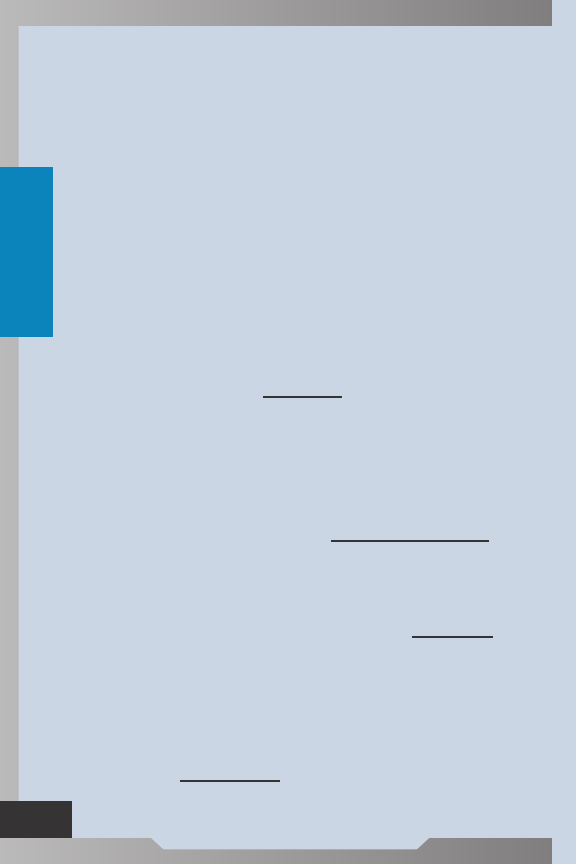
70
out-of-service after December 31, 1998.
(g) An operator or other person providing
information pursuant to this subdivision is not
responsible to any person, for any costs, claims,
or damages for information provided in good
faith regarding abandoned, out-of-service,
or private or customer-owned underground
facilities.
Subdivision 4 – Locating Underground Facility;
Excavator Or Land Surveyor.
(a) The excavator or land surveyor shall
determine the precise location of the
underground facility, without damage, before
excavating within two feet on either side of the
marked location of the underground facility.
(b) If the excavator or land surveyor cancels the
excavation or boundary survey, the excavator or
land surveyor shall cancel the notice through the
notification center.
(c) The notice is valid for 14 calendar days
from the start time stated on the notice. If the
activity will continue after the expiration time,
then the person responsible for the activity shall
serve an additional notice at least 48 hours,
excluding Saturdays, Sundays, and holidays,
before the expiration time of the original notice,
unless the excavator makes arrangements with
the operators affected to periodically verify or
refresh the marks, in which case the notice is
valid for six months from the start time stated
on the notice.
STATE LAW
651.454.0002 - OR - 800.252.1166

www.gopherstateonecall.org
71
(d) The excavator is responsible for reasonably
protecting and preserving the marks until no
longer required for proper and safe excavation
near the underground facility. If the excavator
has reason to believe the marks are obliterated,
obscured, missing, or incorrect, the excavator
shall notify the facility operator or notification
center in order to have an operator verify or
refresh the marks.
216D.05 Precautions To Avoid Damage.
An excavator shall:
(1) plan the excavation to avoid damage to and
minimize interference with underground facilities
in and near the construction area;
(2) use white markings for proposed excavations
except where it can be shown that it is not
practical;
(3) maintain a clearance between an underground
facility and the cutting edge or point of any
mechanized equipment, considering the known
limit of control of the cutting edge or point to
avoid damage to the facility;
(4) provide support for underground facilities in
and near the construction area, including during
backfill operations, to protect the facilities; and
(5) conduct the excavation in a careful and
prudent manner.
216D.06 – DAMAGE TO FACILITY.
Subdivision 1 – Notice; Repair
STATE LAW

72
(a) If any damage occurs to an underground
facility or its protective covering, the excavator
shall notify the operator promptly. When the
operator receives a damage notice, the operator
shall promptly dispatch personnel to the damage
area to investigate. If the damage results in the
escape of any flammable, toxic, or corrosive gas
or liquid or endangers life, health, or property,
the excavator responsible shall immediately
notify the operator and the 911 public safety
answering point, as defined in section 403.02,
subdivision 19, and take immediate action to
protect the public and property. The excavator
shall also attempt to minimize the hazard
until arrival of the operator’s personnel or
until emergency responders have arrived and
completed their assessment. The 911 public
safety answering point shall maintain a response
plan for notifications generated by this section.
(b) An excavator shall delay backfilling in the
immediate area of the damaged underground
facilities until the damage has been investigated
by the operator, unless the operator authorizes
otherwise. The repair of damage must be
performed by the operator or by qualified
personnel authorized by the operator.
(c) An excavator who knowingly damages an
underground facility, and who does not notify
the operator as soon as reasonably possible or
who backfills in violation of paragraph (b), is
guilty of a misdemeanor.
STATE LAW
651.454.0002 - OR - 800.252.1166

www.gopherstateonecall.org
73
Subdivision 2 – Cost Reimbursement.
(a) If an excavator damages an underground
facility, the excavator shall reimburse the
operator for the cost of necessary repairs, and
for a pipeline the cost of the product that was
being carried in the pipeline and was lost as a
direct result of the damage.
(b) Reimbursement is not required if the
damage to the underground facility was caused
by the sole negligence of the operator or the
operator failed to comply with section 216D.04,
subdivision 3.
Subdivision 3 – Prima Facie Evidence Of
Negligence.
It is prima facie evidence of the excavator’s
negligence in a civil court action if damage to
the underground facilities of an operator resulted
from excavation, and the excavator failed to give
an excavation notice under section 216D.04 or
provide support as required by section 216D.05.
216D.07 EFFECT ON LOCAL ORDINANCES.
(a) Sections 216D.01 to 216D.07 do not affect
or impair local ordinances, charters, or other
provisions of law requiring permits to be obtained
before excavating.
(b) A person with a permit for excavation from
the state or a public agency is subject to sections
216D.01 to 216D.07. The state or public agency
that issued a permit for excavation is not liable
STATE LAW

74
for the actions of an excavator who fails to
comply with sections 216D.01 to 216D.07.
216D.08 – CIVIL PENALTIES; PROCEEDS TO
SAFETY ACCOUNT; RULES.
Subdivision 1 – Penalties.
A person who is engaged in excavation for
remuneration or an operator other than an
operator subject to section 299F.59, subdivision
1, who violates sections 216D.01 to 216D.07
is subject to a civil penalty to be imposed by
the commissioner not to exceed $1,000 for
each violation per day of violation. An operator
subject to section 299F.59, subdivision 1,
who violates sections 216D.01 to 216D.07 is
subject to a civil penalty to be imposed under
section 299F.60. The district court may hear,
try, and determine actions commenced under
this section. Trials under this section must be
to the court sitting without a jury. If the fine
exceeds the maximum limit for conciliation
court, the person appealing the fine may request
the commissioner to conduct an administrative
hearing under chapter 14.
Subdivision 2 - Settlement.
The commissioner may negotiate a compromise
settlement of a civil penalty. In determining the
amount of the penalty, or the amount of the
compromise settlement, the commissioner shall
consider the appropriateness of the penalty to
STATE LAW
651.454.0002 - OR - 800.252.1166

www.gopherstateonecall.org
75
the size of the business of the person charged,
the gravity of the violation, and the good faith
of the person charged in attempting to achieve
compliance, after notification of a violation.
Unless the commissioner chooses to proceed in
district court under subdivision 1, the contested
case and judicial review provisions of chapter 14
apply to the orders of the commissioner imposing
a penalty under sections 216D.01 to 216D.07. The
amount of the penalty, when finally determined,
may be deducted from sums owing by the state of
Minnesota to the person charged.
Subdivision 3 – Credited To Pipeline Safety
Account; Appropriation.
Penalties collected under this section must be
deposited in the state treasury and credited
to the pipeline safety account to be applied
to the reduction of expenses or costs assessed
by the commissioner against persons regulated
under this chapter. Penalties collected under
this section are annually appropriated to the
commissioner of public safety.
Subdivision 4 – Rules.
The commissioner shall adopt rules establishing
reasonable guidelines for imposing penalties.
The rules must provide for notice that a penalty
is assessed and may exempt activities from
penalties unless the excavator or operator as
defined in this section has evidenced a course of
action in disregard of this chapter.
STATE LAW

76
216D.09 – INJUNCTIVE RELIEF.
Subdivision 1 – Jurisdiction.
The district courts of the state of Minnesota
have jurisdiction, subject to the provisions
of the statutes and the rules of practice and
procedure of the state of Minnesota relative to
civil actions in the district courts, to restrain
violations of sections 216D.01 to 216D.07, on
petition by the attorney general on behalf of
the state of Minnesota. When practicable, the
commissioner shall give notice to a person
against whom an action for injunctive relief
is contemplated and afford the person an
opportunity to present views and, except in the
case of a knowing and willful violation, shall
afford the person reasonable opportunity to
achieve compliance. However, the failure to
give the notice and afford an opportunity to
present views does not preclude the granting of
appropriate relief.
Subdivision 2 – Venue.
Actions under this section must be brought
in district court in the district where the
defendant’s principal place of business in the
state is located, and process in these cases may
be served in any other district in the state of
Minnesota where the defendant may be found
or in which the defendant is an inhabitant or
transacts business.
STATE LAW
651.454.0002 - OR - 800.252.1166

www.gopherstateonecall.org
77
As Amended October, 2005
7560.0100 – DEFINITIONS
Subpart 1. – Scope.
The terms used in this chapter have the meanings
given them. Terms not defined in this part have
the meanings given them in Minnesota Statutes,
section 216D.01.
Subpart 1A. Abandoned Facility.
“Abandoned facility” means an underground
facility that is no longer in service and is
physically disconnected from a portion of the
operating facility that is in use or still carries
service. An abandoned facility has been deemed
abandoned by the operator.
Subpart 2. Director.
“Director” means the director of the Office of
Pipeline Safety of the Minnesota Department of
Public Safety.
Subpart 3. Good Cause To Believe.
“Good cause to believe” means grounds put forth
in good faith that are not arbitrary, irrational,
Minnesota Rules Chapter 7560
Ofce of Pipeline Safety
Excavation Notice System
MN RULES

78
unreasonable, or irrelevant and that are based
on at least one of the following sources:
A. information from a person;
B. facts supplied by the notification center
defined in Minnesota Statutes, section
216D.01, subdivision 8;
C. facts of which the director or an agent of the
director has personal knowledge; and
D. information provided by excavators or
operators.
Subpart 4. Locate.
“Locate” means an operator’s markings of an
underground facility.
Subpart 5.
[Renumbered as subp 8]
Subpart 5A.
[Renumbered as subp 9]
Subpart 6.
[Renumbered as subp 11]
Subpart 7. Meet.
When used as a noun in this chapter,
“meet”refers to a meeting at the site of
proposed excavation requested at the time
of notice by the excavator with all affected
underground facility operators to further clarify
the precise geographic location of excavation,
MN RULES
651.454.0002 - OR - 800.252.1166

www.gopherstateonecall.org
79
schedule locating, propose future contacts,
and share other information concerning the
excavation and facilities.
Subpart 8. Ofce.
“Office” means the Office of Pipeline Safety of
the Minnesota Department of Public Safety.
Subpart 9. Out-Of-Service Facility.
“Out-of-service facility” means an underground
facility that is no longer maintained and is
not intended for future use, but has not been
deemed abandoned. An out-of-service facility
may still be connected to a portion of the
operating facility that is in use or still carries
service.
Subpart 10. Public Right-Of-Way.
“Public right-of-way” means the area on, below,
or above a public roadway, highway, street,
cartway, bicycle lane, and sidewalk in which a
government unit has an interest, including other
rights-of-way dedicated for travel purposes and
utility easements of government units.
Subpart 11. Remuneration.
“Remuneration” means direct or indirect
compensation or consideration paid to the person
or the person’s agent, employer, employee,
subcontractor, or contractor. A person who
excavates as part of the person’s duties as an
MN RULES

80
employee, employer, agent, subcontractor,
or contractor is considered to be acting for
remuneration.
Subpart 12. Service Lateral.
“Service lateral” means an underground facility
that is used to transmit, distribute, or furnish
gas, electricity, communications, or water from
a common source to an end-use customer. A
service lateral is also an underground facility
that is used in the removal of wastewater from a
customer’s premises.
7560.0125 ABANDONED AND OUT-OF-
SERVICE FACILITIES.
Subpart 1. Duty Of Operators To Provide Readily
Available Information.
Operators shall provide readily available
information, as shown on maps, drawings,
diagrams, or other records used in the normal
course of business, on the approximate location
of abandoned and out-of-service facilities
to an excavator by the excavation date and
time noted on the excavation or location
notice unless otherwise agreed between the
excavator and the operator. An operator fulfills
an obligation to provide information on these
facilities by doing one or more of the following:
A. locating and marking the approximate
location of the facility according to the
MN RULES
651.454.0002 - OR - 800.252.1166

www.gopherstateonecall.org
81
current color code standard used by the
American Public Works Association, as required
in Minnesota Statutes, section 216D.04,
subdivision 3, with an abandoned or out-of-
service facility identified by an uppercase A
surrounded by a circle;
B. providing informational flags at the area of
proposed excavation;
C. communicating information verbally; or
D. providing copies of maps, diagrams, or
records.
Subpart 2. Duty To Notify Operator.
An excavator shall notify the operator:
A. before moving, removing, or otherwise
altering a facility that is thought to be
abandoned or out of service; or
B. if damage to the facility occurs, pursuant
to Minnesota Statutes, section 216D.01,
subdivision 2.
Subpart 3. Verication Of Abandoned Or Out-Of-
Service Facility.
Upon receipt of notification by an excavator
pursuant to subpart 2, an operator shall verify
that an underground facility is abandoned or out
of service, by either reference to installation
records, testing, or other comparable standard
of verification, before an excavator is allowed to
move, remove, or otherwise alter an underground
facility.
MN RULES

82
Subpart 4. Liability.
An operator providing information pursuant to
Minnesota Statutes, section 216D.04, subdivision
3, is not responsible to any person for any costs,
claims, or damages for information provided
in good faith regarding abandoned and out-of-
service underground facilities.
7560.0150 PUBLIC RIGHT-OF-WAY MAPPING
AND INSTALLATION.
Subpart 1. Duty Of Operator To Map.
After December 31, 2005, an operator shall
maintain a map, a diagram, a drawing, or
geospatial information regarding the location of
its underground facility within a public right-of-
way installed after that date.
Subpart 2. Duty To Install Locating Wire.
After December 31, 2005, an operator shall
install a locating wire or have an equally
effective means of marking the location of each
nonconductive underground facility within a
public right-of-way installed after that date.
This requirement does not apply when making
minor repairs to an existing nonconductive
facility. As applied to this chapter, “minor
repairs” means repairs to or partial replacement
of portions of existing service laterals located
within a public right-of-way for purposes of
routine maintenance and upkeep.
MN RULES
651.454.0002 - OR - 800.252.1166

www.gopherstateonecall.org
83
7560.0200 [REPEALED, 24 SR 448]
7560.0225 EXCAVATOR RESPONSIBILITIES
REGARDING A LOCATE.
Subpart 1.
[Repealed, 29 SR 1503]
Subpart 2. Responsibility To Protect And
Preserve.
The excavator is responsible for reasonably
protecting and preserving a locate until no longer
required for proper and safe excavation near the
underground facility. If the excavator has reason
to believe a locate is obliterated, obscured,
missing, or incorrect, the excavator shall notify
the facility operator or notification center in
order to have an operator verify, refresh, or re-
mark the locate.
Subpart 3. Use Of Locate.
A locate is valid for 14 days from the excavation
commencement time stated on the excavation
or location notice, unless the excavator has
made previous arrangements with the operators
affected to periodically verify, refresh, or re-
mark the locate.
7560.0250 LOCATE STANDARDS.
Subpart 1. Facility Locate.
Unless otherwise agreed to between the
MN RULES

84
excavator and operator, an operator shall
locate an underground facility using stakes,
flags, paint, or other suitable materials in
varying combinations dependent upon the
surface. The locate must be in sufficient detail
to clearly identify the approximate route of
the underground facility. The locate must also
include:
A. name, abbreviation, or logo of the operator
when more than one operator listed on the
notice uses the same color markings
B. width of the underground facility if it is
greater than eight inches; and
C. number of underground facilities if greater
than one.
Subpart 2. Operator Duties In No Conflict
Situation.
After December 31, 2005, an operator who
receives notice and determines that an
underground facility is not in conflict with the
proposed excavation shall complete one or more
of the following:
A. mark the area “NO” followed by the
operator’s name, abbreviation, or logo in the
color code of the underground facility not in
conflict;
B. place a clear plastic flag at the area that:
(1) states “N/C” or “NO CONFLICT” in
lettering matching the color code of the
underground facility that is not in conflict; and
MN RULES
651.454.0002 - OR - 800.252.1166

www.gopherstateonecall.org
85
(2) includes the operator’s name, abbreviation,
or logo, the date, a contact telephone number,
and the ticket number; or
C. contact the notification center through
procedures required by the notification center
and indicate that there are no underground
facilities in conflict with the proposed
excavation and that no markings or flags were
left at the proposed excavation site.
Subpart 3. Placement Of Flags Or Markings.
If using N/C (no conflict) flags or markings
pursuant to subpart 2, an operator shall place the
flags or markings in a location that can be readily
observed by an excavator. When an area of
proposed excavation is delineated by the use of
white markings, an operator shall place the N/C
flags or markings within, or as near as practicable
to, the delineated area.
Subpart 4. Duties Of Notication Center.
After December 31, 2005, the notification center
shall make the information received under
subpart 2 available to the excavator before
the start date and time on the notice. The
notification center may fulfill this requirement by
making the information accessible through one
or more Internet addresses, by transmitting the
information to a continuously working facsimile
machine maintained by the excavator, or by
other methodology developed by the notification
MN RULES

86
center. The notification center shall make
available the information received by operators
pursuant to this section through an electronic
means. The notification center is not required by
this subpart to contact an excavator verbally via
telephone.
7560.0300 OPERATOR PARTICIPATES AND
SHARES COSTS.
An operator shall participate in and share the
costs of the one call excavation notice system by:
A. submitting the information required by the
notification center to allow the center to
notify the operator of excavation activity;
B. updating the information provided to the
notification center on a timely basis;
C. installing and paying for equipment
reasonably requested by the notification
center to facilitate receipt of notice of
excavation from the center;
D. paying the costs charged by the notification
center on a timely basis; and
E. receiving and responding to excavation
notices, including emergency notices, as
required by Minnesota Statutes, chapter
216D.
7560.0325 EMERGENCY EXCAVATION
NOTICES.
Subpart 1. Duty Of Excavator To Provide Notice.
MN RULES
651.454.0002 - OR - 800.252.1166

www.gopherstateonecall.org
87
An excavator shall provide notice to the
notification center before commencing an
emergency excavation, unless subpart 2 applies.
All emergency notices, regardless whether
made prior to excavation, must be verbal or in
a manner accepted by the notification center.
In addition to the information required by the
notification center, the notice must also contain:
A. a description of the situation requiring the
emergency excavation;
B. the precise location of the proposed area of
the emergency excavation;
C. at least one continuously staffed telephone
number where the excavator can be
contacted by the operator throughout the
emergency; and
D. the excavation start date and time if the
need for excavation is not immediate.
Subpart 2. Excavating Before Notice.
If an emergency is such that providing notice
or waiting for an operator would result in an
undue risk to life, health, or significant loss of
property, the excavator may excavate without
providing prior notice or waiting for an operator
to mark an underground facility. In this situation,
the excavator shall provide notice as soon as
practicable and take all reasonable precautions
to avoid or minimize damage. Excavation prior
to notice under this subpart does not relieve an
excavator from any responsibility for damage to
MN RULES

88
an underground facility pursuant to Minnesota
Statutes, section 216D.06.
Subpart 3. Emergency Notice Requesting
Immediate Response.
Upon receiving an emergency excavation notice
requesting an immediate response, an operator
shall:
A. attempt to contact the excavator within one
hour at the telephone number provided in
subpart 1, item C, to provide any information
concerning facilities at or near the area of
excavation including an anticipated response
time; and
B. locate and mark the underground facility
within three hours of notice unless:
(1) otherwise agreed between the parties;
(2) the operator notifies the excavator that
not locating does not present an immediate
danger to life or health, or a significant loss of
property; or
(3) there is an event or situation that cannot
be reasonably anticipated or controlled by the
operator.
Subpart 4. Emergency Notice Requesting
Scheduled Response.
Upon receiving an emergency excavation notice
that does not require an immediate response,
and before the scheduled excavation start date
and time, an operator shall:
MN RULES
651.454.0002 - OR - 800.252.1166

www.gopherstateonecall.org
89
A. locate and mark the underground facility,
unless otherwise agreed between the parties;
or
B. notify the excavator at the telephone number
provided in subpart 1, item C, that there is
not an underground facility within the area
of proposed excavation. For purposes of this
subpart, a requested start time of three hours
or less from the time notice is provided to
the center is considered an emergency notice
requesting immediate response under subpart
3.
7560.0350 EXCAVATION NOTICE REQUESTING
MEET.
Subpart 1. Excavator Duties.
When requesting a meet through the notification
center, an excavator must provide at least one
contact name and telephone number to assist in
facilitating the meet. An excavator shall contact
the notification center to cancel or reschedule
the meet and the notification center shall relay
this information to the affected operators.
When a meet is requested, an excavator’s notice
must include the entire geographic area of the
proposed excavation and the specific location of
the meet. This part does not relieve an excavator
from the duty to provide a precise geographic
location of the proposed area of excavation, or to
use white markings except where it can be shown
that to do so is not practical.
MN RULES
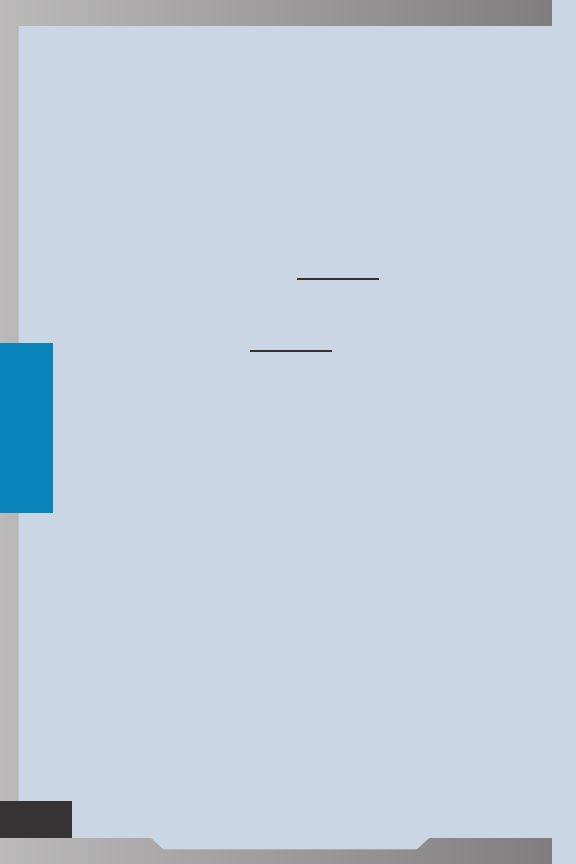
90
Subpart 2. Operator Duties.
When a meet is requested, an affected operator
shall make a reasonable effort to attend the
meet at the proposed date and time, or contact
the excavator before the meet and reschedule
for a mutually agreed date and time.
Subpart 3. Excavation Start Date And Time.
When a meet is requested, the meet date and
time must be at least 48 hours after notice is
provided, excluding Saturdays, Sundays, and
holidays, and the excavation start date and time
must be at least 24 hours after the proposed
meet date and time specified on the notice,
excluding Saturdays, Sundays, and holidays.
This subpart does not apply if these matters are
provided for in a written agreement with all
affected operators.
Subpart 4. Meet Request Documentation.
An excavator shall maintain written
documentation of each meet with an
underground facility operator or representative.
This documentation must be kept for the
duration of the excavation conducted under the
notice. The documentation must include:
A. the date and time of each meet;
B. the names, company affiliations, and contact
information of the attendees of each meet;
C. a diagram, sketch, or description of the
precise excavation locations, dates, and
times; and
MN RULES
651.454.0002 - OR - 800.252.1166

www.gopherstateonecall.org
91
D. the agreed schedule of any future meets or
communications.
7560.0375 LOCATING A SERVICE LATERAL.
Subpart 1. Operator Duties.
Unless otherwise agreed, an underground facility
operator shall locate a service lateral before
the start date and time on the notice and in
accordance with items A through C:
A. An operator of a natural gas, propane, or
electric facility shall locate a service lateral up
to the meter or the connection to a customer’s
underground facility, whichever is closer to the
end-use customer. If the meter or connection
to the customer’s underground facility is
within a public right-of-way, at a minimum
the operator shall locate that portion of the
service lateral within the public right-of-way
up to the point where the service lateral first
leaves the public right-of-way.
B. An operator of a communication facility shall
locate a service lateral up to the entry of the
first building. If the service lateral does not
enter a building, the operator shall locate up
to the utilization equipment, fence, or wall
that surrounds the equipment.
C. After December 31, 2005, an operator of a
sewage or water facility, at a minimum, shall
locate that portion of the service lateral
within a public right-of-way installed after
that date up to the point where the service
MN RULES

92
lateral first leaves the public right-of-way.
The operator shall either locate or provide
information as shown on maps, drawings,
diagrams, or other records, on the location
of a sewer or water service lateral installed
before January 1, 2006. If no information
is available on a sewer or water service
lateral installed before January 1, 2006, then
notifying the excavator that no information
exists fulfills the requirements of this section.
Subpart 2. Exception.
An operator is not required to locate a service
lateral of a customer who currently participates
in the statewide notification system, provided
the customer and operator mutually agree that
the customer will assume locate responsibilities.
The agreement must be in writing.
7560.0400 CITATIONS.
Subpart 1. Notice Of Violation.
The office shall issue a notice of probable
violation when the office has good cause to
believe a violation of Minnesota Statutes,
sections 216D.01 to 216D.09 or this chapter has
occurred.
Subpart 2. Contents Of Notice Of Violation.
A notice of violation must include:
A. a statement of the statute or rule allegedly
violated by the person and a description of
MN RULES
651.454.0002 - OR - 800.252.1166

www.gopherstateonecall.org
93
the evidence on which the allegation is based;
B. notice of response options available to the
person cited;
C. notice that the person has 30 days in which to
respond;
D. notice that failure to respond within 30 days
precludes administrative review under this
chapter; and
E. if a civil penalty is proposed, the amount of
the proposed civil penalty and the maximum
civil penalty applicable under law.
Subpart 3. Receipt Of Notice.
The notice of violation is deemed received three
days after mailing to the person’s last known
address.
7560.0500 RESPONSE OPTIONS.
The person shall respond to the notice of
violation in the following way:
A. When the notice contains a proposed
compliance order, the person shall:
(1) agree to the proposed compliance order;
(2) request the execution of a consent order;
(3) object to the proposed compliance order
and submit written explanations, information,
or other materials in answer to the allegations
in the notice; or
(4) request the office to initiate a hearing
under Minnesota Statutes, sections 14.50 to
14.69.
MN RULES

94
B. When the notice contains a proposed civil
penalty, the person shall:
(1) pay the penalty and close the case;
(2) submit an offer in compromise of the
proposed civil penalty;
(3) submit a written explanation, information,
or other material in answer to the allegations
or in mitigation of the proposed civil penalty;
or
(4) request the office to initiate a hearing
under Minnesota Statutes, sections 14.50 to
14.69.
C. Failure to respond in writing within 30 days
precludes administrative review under this
chapter. A final order will be issued and
penalties will be forwarded for collection.
7560.0600 DIRECTOR REVIEW.
If the person objects to the proposed civil
penalty or compliance order and submits written
explanations, information, or other materials
in response to a notice of violation, within the
time specified in part 7560.0500, the director
shall review the submissions and determine
whether to negotiate further, to change or
withdraw the notice of violation, or to initiate a
hearing under Minnesota Statutes, sections 14.50
to 14.69.
7560.0700 CONSENT ORDER.
An executed consent order must contain:
MN RULES
651.454.0002 - OR - 800.252.1166

www.gopherstateonecall.org
95
A. an admission by the person of the jurisdictional
facts;
B. a waiver of further procedural steps and the
right to seek judicial or administrative review
or otherwise challenge or contest the validity
of the consent order; and
C. an agreement that the notice of violation may
be used to construe the terms of the consent
order.
7560.0800 CIVIL PENALTIES.
Subpart 1. Proceedings Against Excavators.
When the office has good cause to believe that
an excavator is engaging or has engaged in
conduct that violates Minnesota Statutes, section
216D.04, subdivision 1, 2, or 3; 216D.05, clause
(1), (2), (3), or (4); or 216D.06, subdivision 1,
or a rule adopted under Minnesota Statutes,
section 216D.08, subdivision 4, the office, if
appropriate, shall negotiate a civil penalty under
Minnesota Statutes, section 216D.08, subdivision
2. A penalty imposed under Minnesota Statutes,
section 216D.08, is subject to the contested
case and judicial review provisions of Minnesota
Statutes, chapter 14. An operator who engages
or has engaged in excavation that violates
Minnesota Statutes, chapter 216D, is subject
to the proceedings specified in subpart 2 and is
subject to the penalties specified in subpart 4,
item B or C.
MN RULES

96
Subpart 2. Proceedings Against Underground
Facility Operators.
The office may negotiate a civil penalty under
item A or B.
A. When the office has good cause to believe
that an underground facility operator,
other than an operator set forth in item
B, is engaging or has engaged in conduct
that violates Minnesota Statutes, sections
216D.01 to 216D.07, or a rule adopted
under Minnesota Statutes, section 216D.08,
subdivision 4, the office, if appropriate, shall
negotiate a civil penalty under Minnesota
Statutes, section 216D.08, subdivision 2. A
penalty imposed under Minnesota Statutes,
section 216D.08, is subject to the contested
case and judicial review provisions of
Minnesota Statutes, chapter 14.
B. When the office has good cause to believe
that an operator who engages in the
transportation of gas or hazardous liquids
or who owns or operates a gas or hazardous
liquid pipeline facility is engaging or has
engaged in conduct that violates Minnesota
Statutes, sections 299F.56 to 299F.641, or
a rule adopted under Minnesota Statutes,
section 299F.60, subdivision 5, the office, if
appropriate, shall negotiate a civil penalty
under Minnesota Statutes, section 299F.60,
subdivision 2. A penalty imposed under
Minnesota Statutes, section 299F.60, is
MN RULES
651.454.0002 - OR - 800.252.1166

www.gopherstateonecall.org
97
subject to the contested case and judicial
review provisions of Minnesota Statutes,
chapter 14.
Subpart 3. Assessment Considerations.
In assessing a civil penalty under this part, the
office shall consider the following factors:
A. the nature, circumstances, and gravity of the
violation;
B. the degree of the person’s culpability;
C. the person’s history of previous offenses;
D. the person’s ability to pay;
E. good faith on the part of the person in
attempting to remedy the cause of the
violation;
F. the effect of the penalty on the person’s ability
to continue in business; and
G. past reports of damage to an underground
facility by a person.
Subpart 4. Maximum penalties.
For the purposes of this part, penalties imposed
under this part must not exceed the limits in
items A to C.
A. Penalties imposed against excavators must
not exceed $1,000 for each violation per day of
violation.
B. Penalties imposed against underground facility
operators, other than an operator set forth
in item C, must not exceed $1,000 for each
violation per day of violation.
MN RULES

98
C. Penalties imposed against an operator
who engages in the transportation of gas or
hazardous liquids or who owns or operates a
gas or hazardous liquid pipeline facility must
not exceed $10,000 for each violation for each
day that the violation persists, except that
the maximum civil penalty must not exceed
$500,000 for a related series of violations.
Subpart 5. Payment procedure.
The person shall pay a civil penalty that has
been proposed, assessed, or compromised
by submitting to the office a check or money
order in the correct amount, payable to the
commissioner of public safety.
MN RULES
651.454.0002 - OR - 800.252.1166

www.gopherstateonecall.org
99
OFFICE OF PIPELINE SAFETY
Contact Information for Minnesota
Ofce of Pipeline Safety
ADDRESS:
MN Office of Pipeline Safety
445 Minnesota Street
Suite 147
St. Paul, MN 55101
TELEPHONE:
Phone number ........................ 651-201-7230
State Duty Ofcer .................... 800-422-0798
WEB ADDRESS:
dps.mn.gov/divisions/ops

100
NOTES
651.454.0002 - OR - 800.252.1166

www.gopherstateonecall.org
101
NOTES
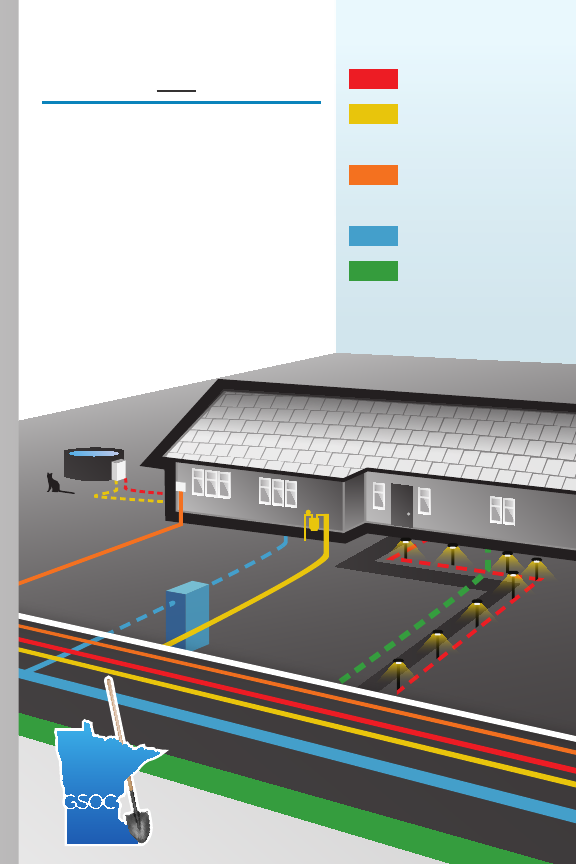
PRIVATE FACILITIES:
WHAT DOES NOT GET MARKED
Private underground
facilities, such as private
utility lines and private
distribution networks, do
not get marked by facility
operators. When a property
owner or tenant has any type
of private underground facility,
they are responsible to locate
those facilities or hire someone
to locate them.
ELECTRIC
GAS, OIL, AND
PROPANE
PHONE AND
CABLE
WATER
SEWER

Customer-owned lines usually include any that serve
outbuildings, hot tubs, security lighting, pools, and natural
gas grills.
The free locating service available through Gopher State One
Call (GSOC) applies ONLY to public facility operators. The
diagram below shows a variety of utilities, some owned by
the utility and some by the homeowner.
Those utilities marked by dotted lines are typically owned
by the property owner. Those lines will NOT be marked by
contacting GSOC. Private locating services will mark these
for a fee.
For information on private locating companies
www.gopherstateonecall.org/about-gsoc/industry-directory
DON’T FORGET!
After calling GSOC, wait 48
hours (excluding weekends
and holidays) before you
begin your excavation!
Remember to check for facility
operator responses.
ELECTRIC
GAS, OIL, AND
PROPANE
PHONE AND
CABLE
WATER
SEWER
Homeowner Property Line
